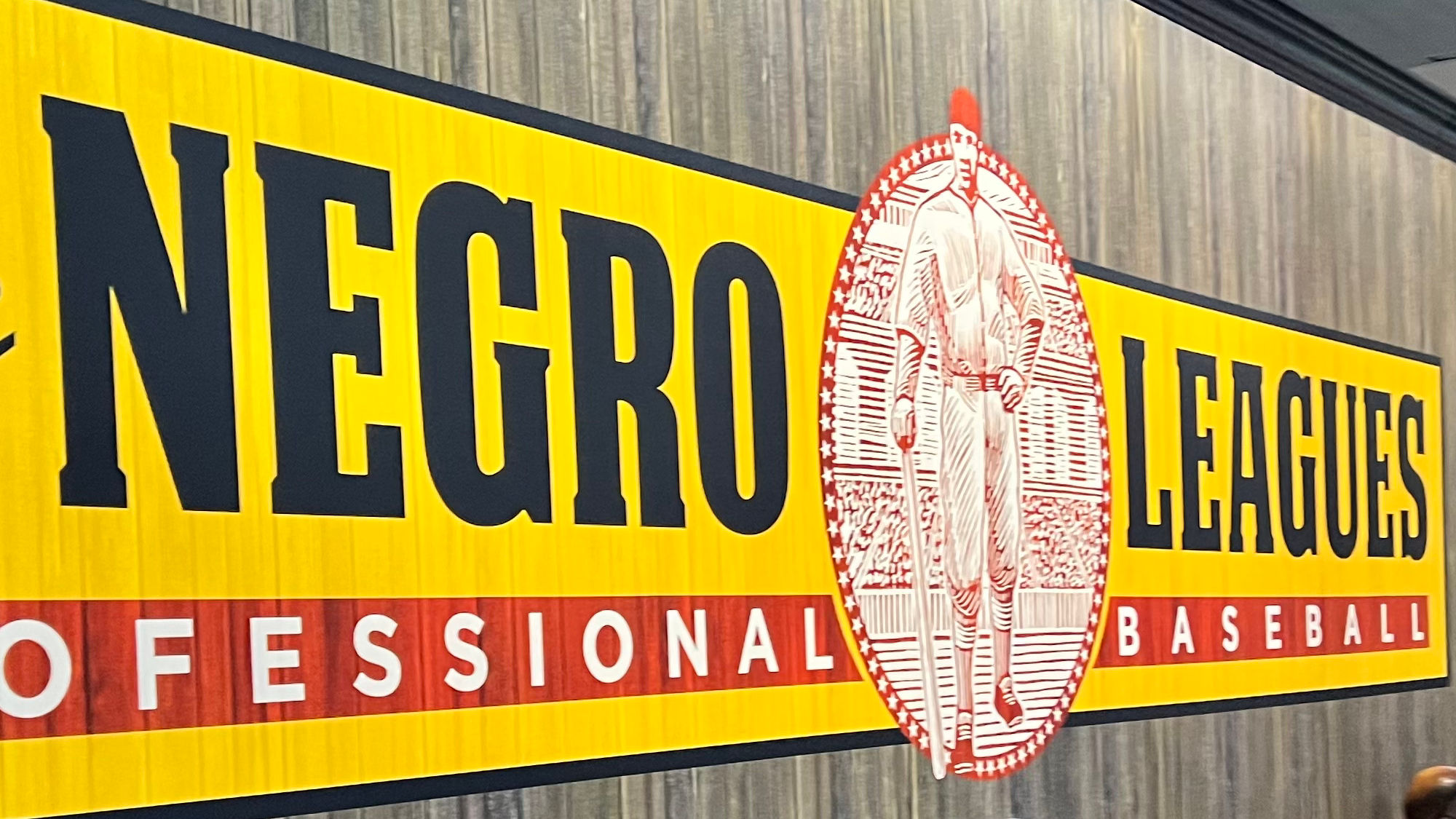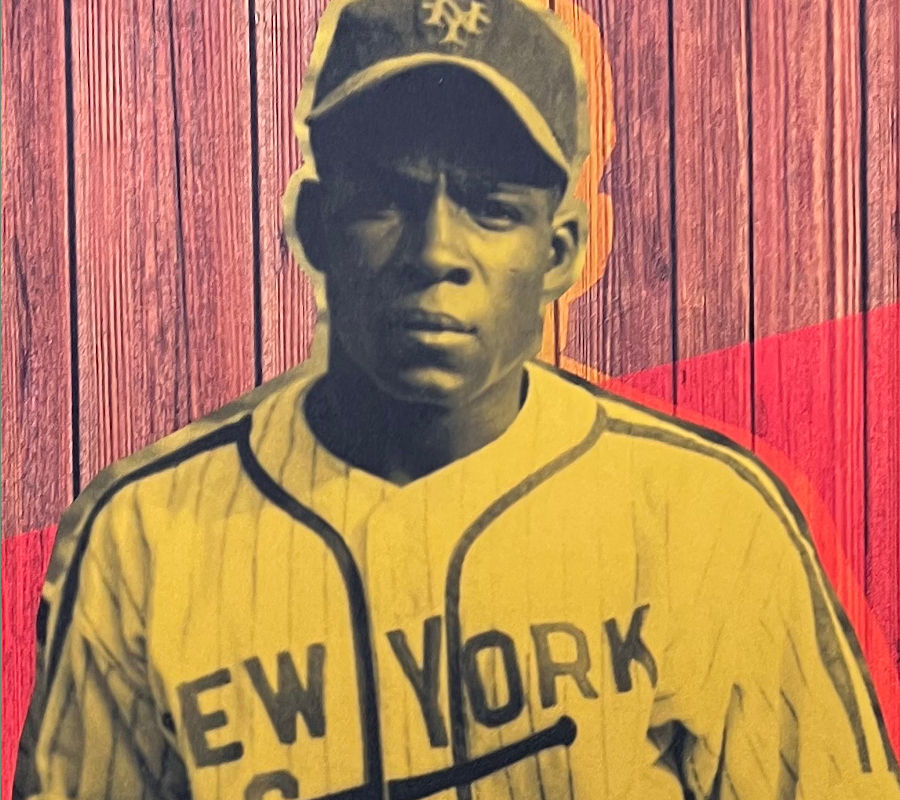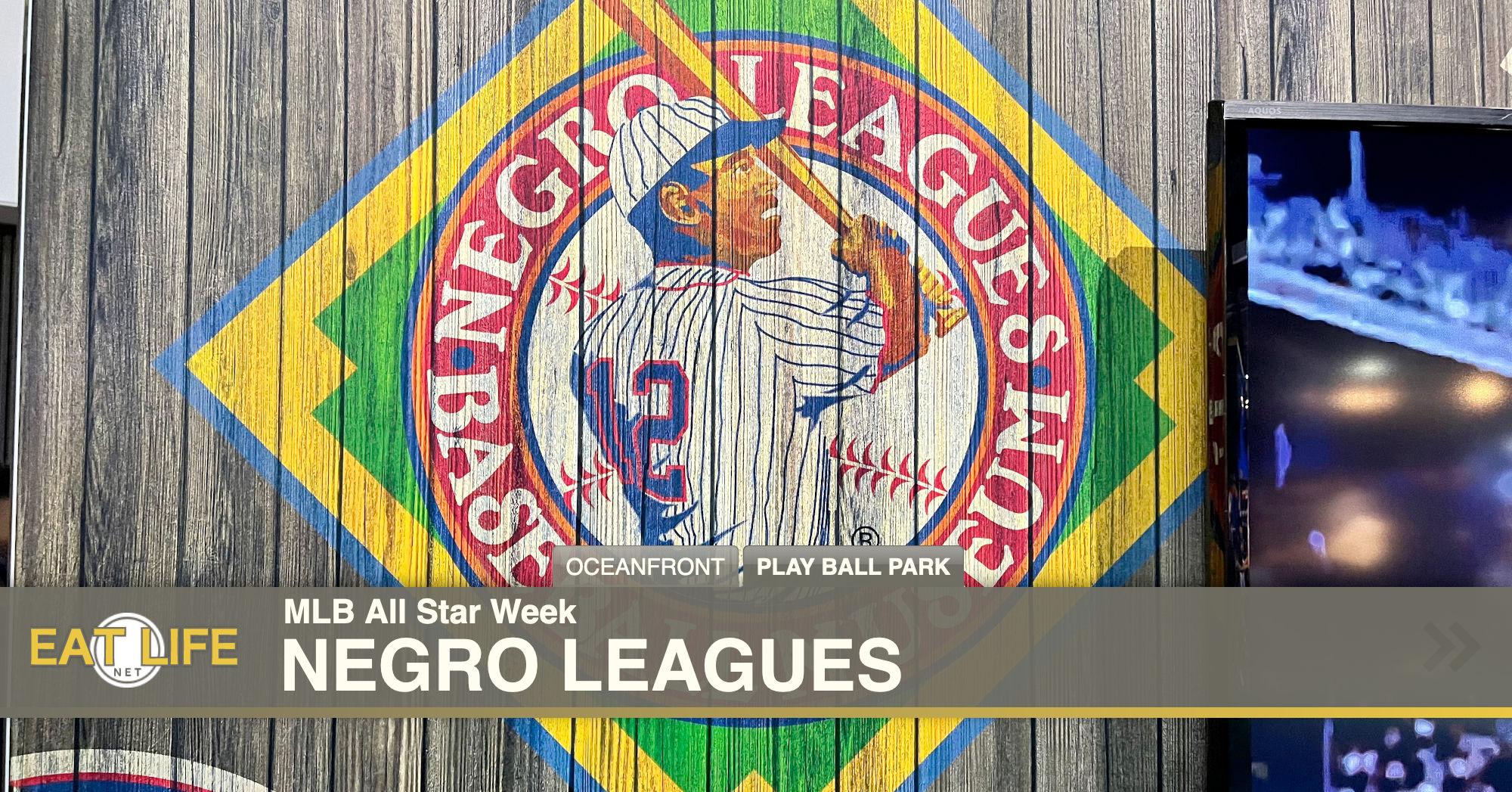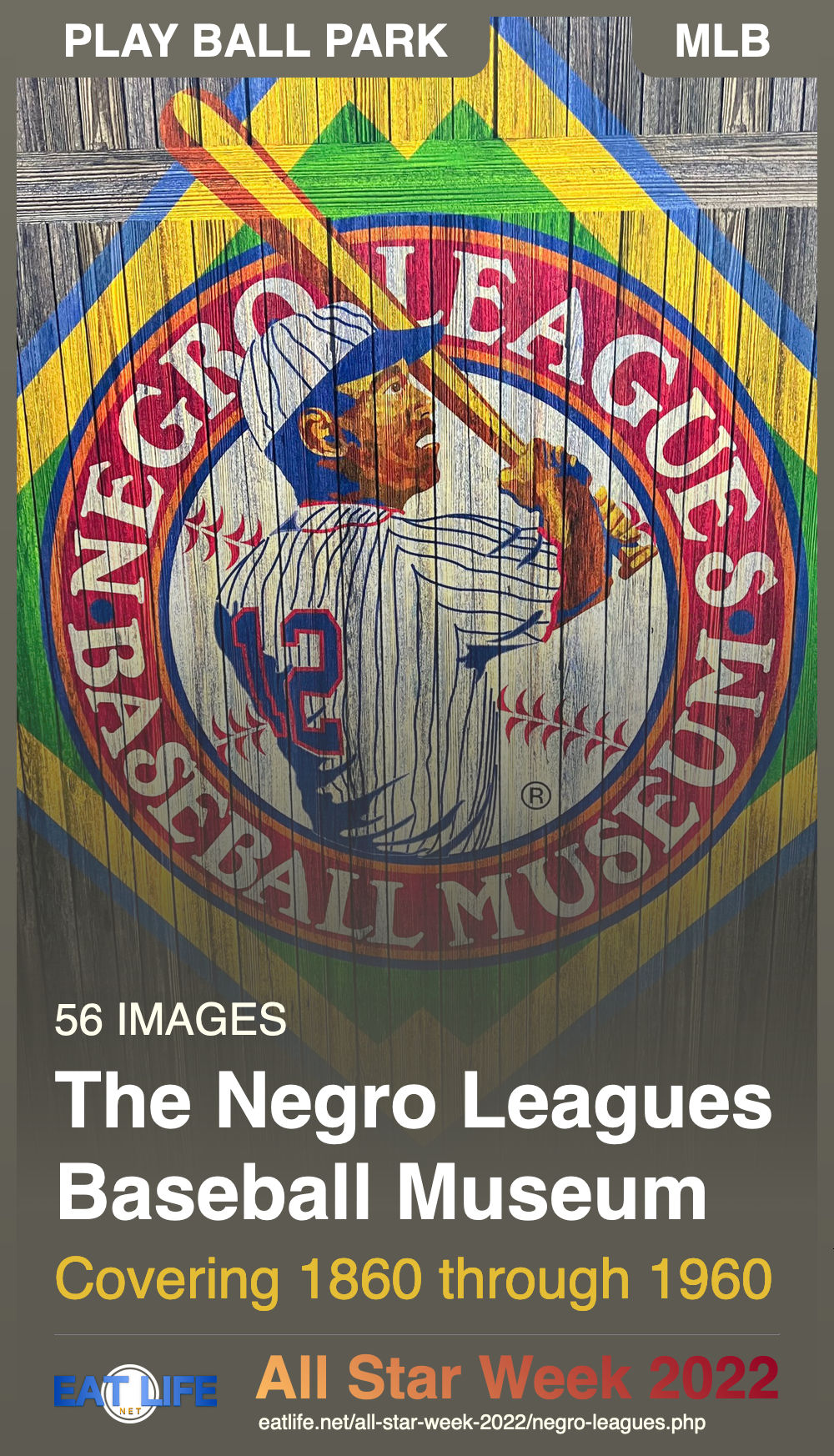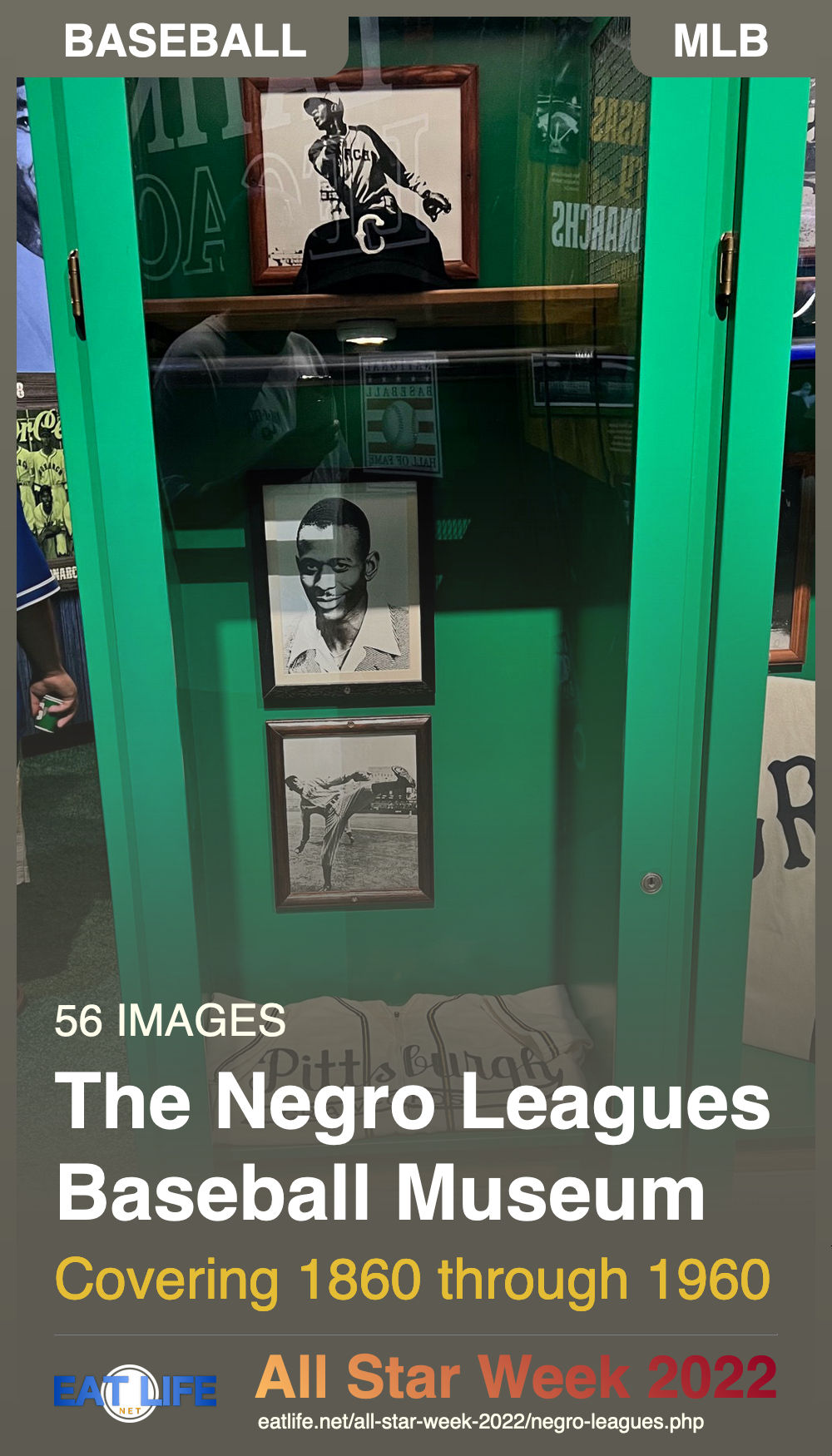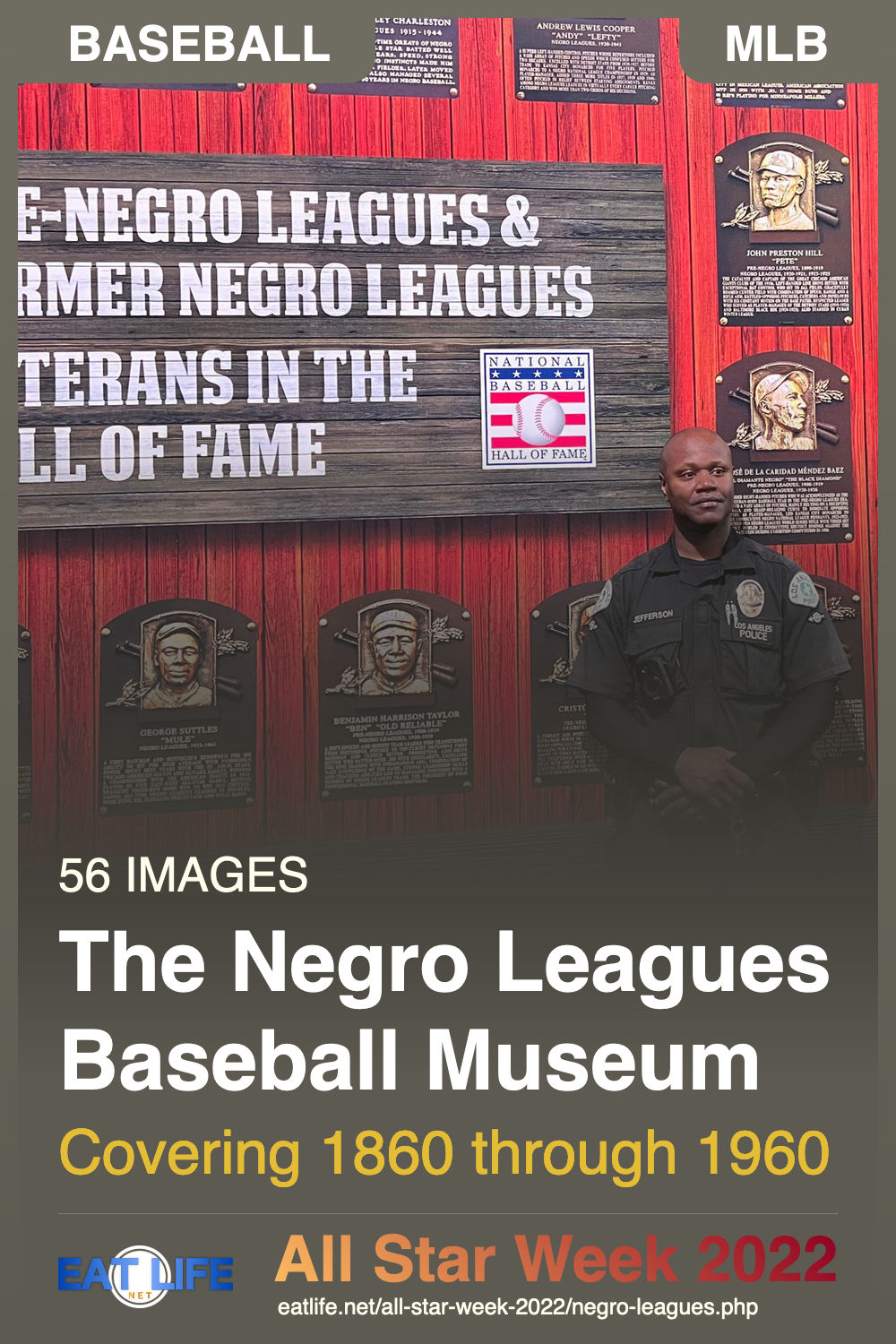LA Convention Center
Something for Every Fan
Updated October 2024
Posted July 2022
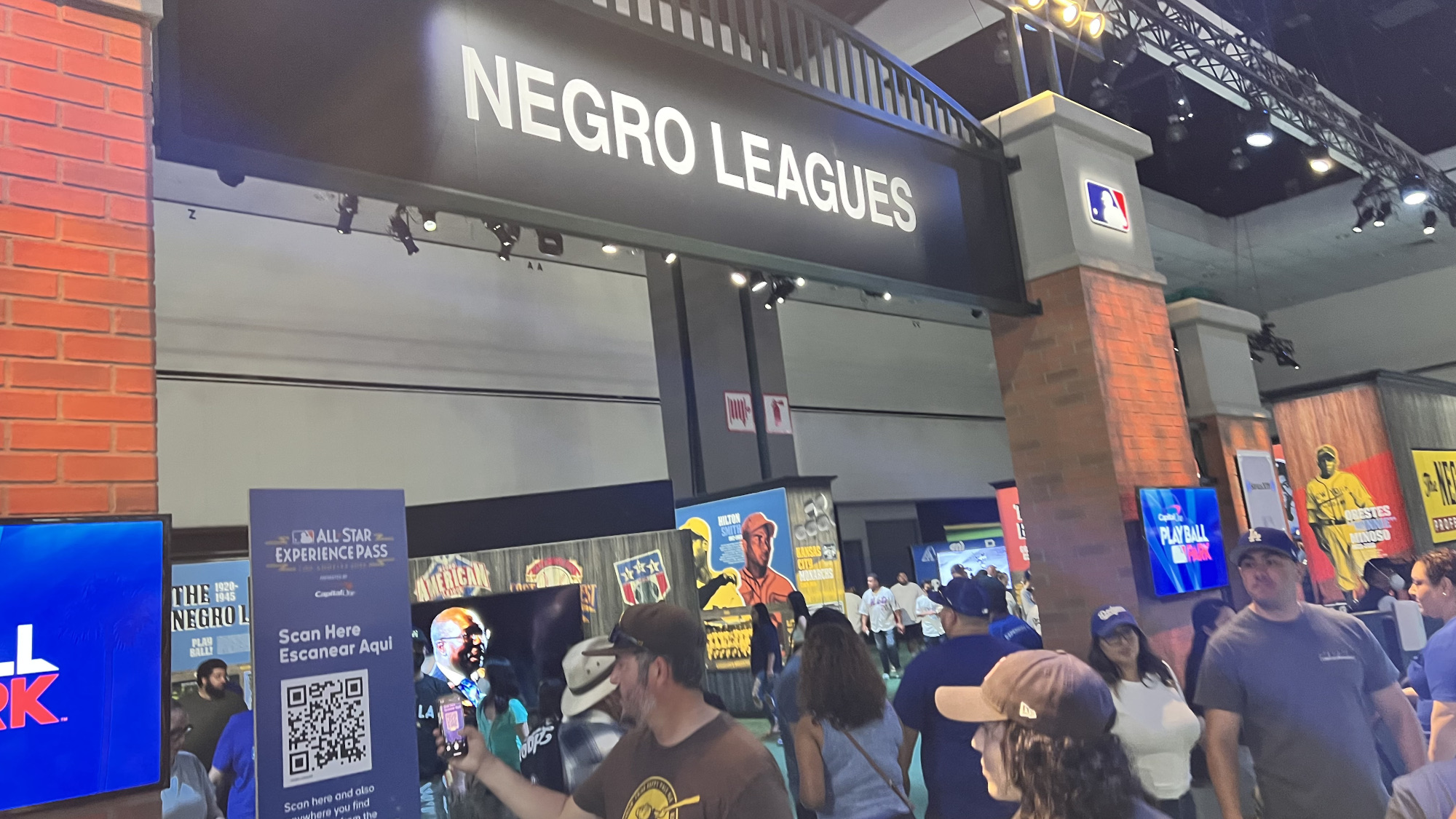
Negro Leagues
Booth Entrance
Booth Entrance
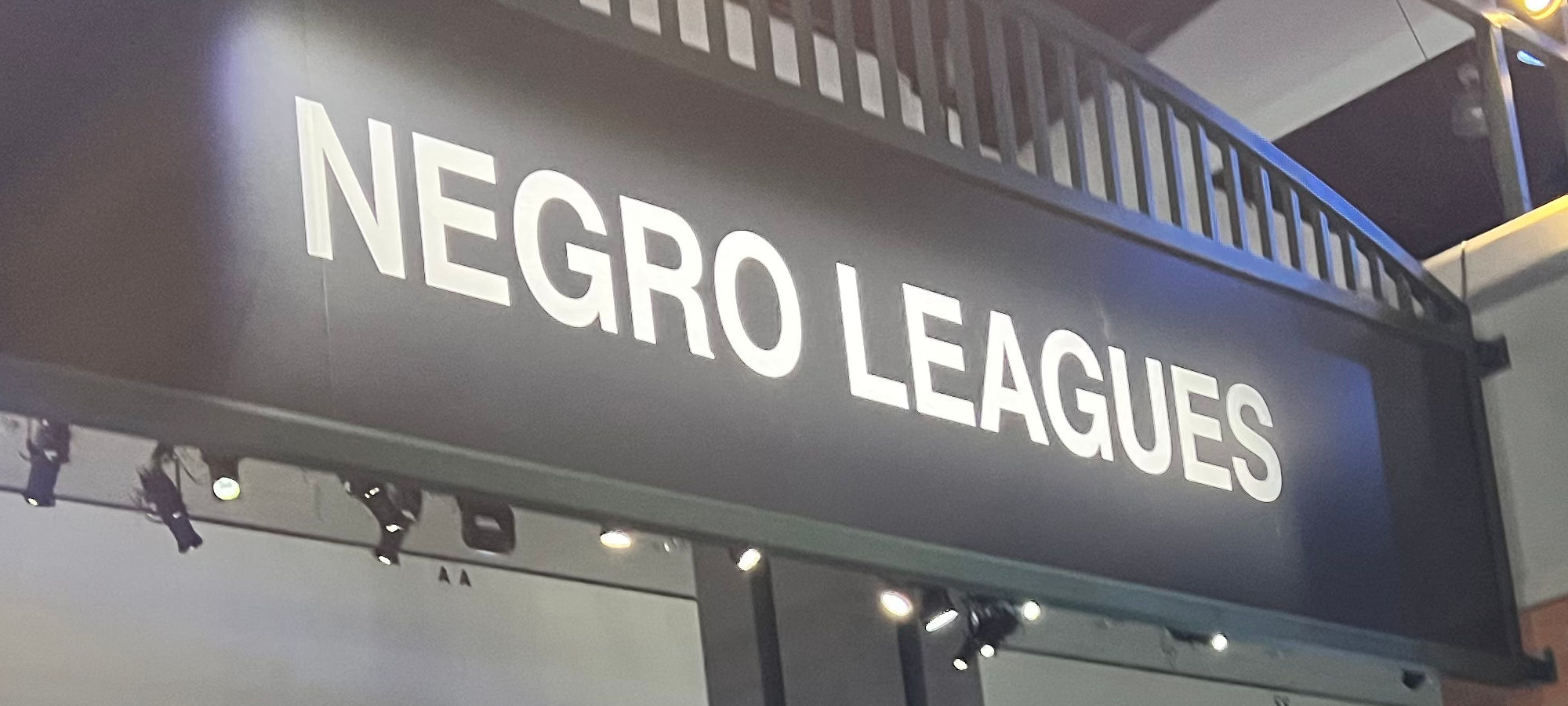
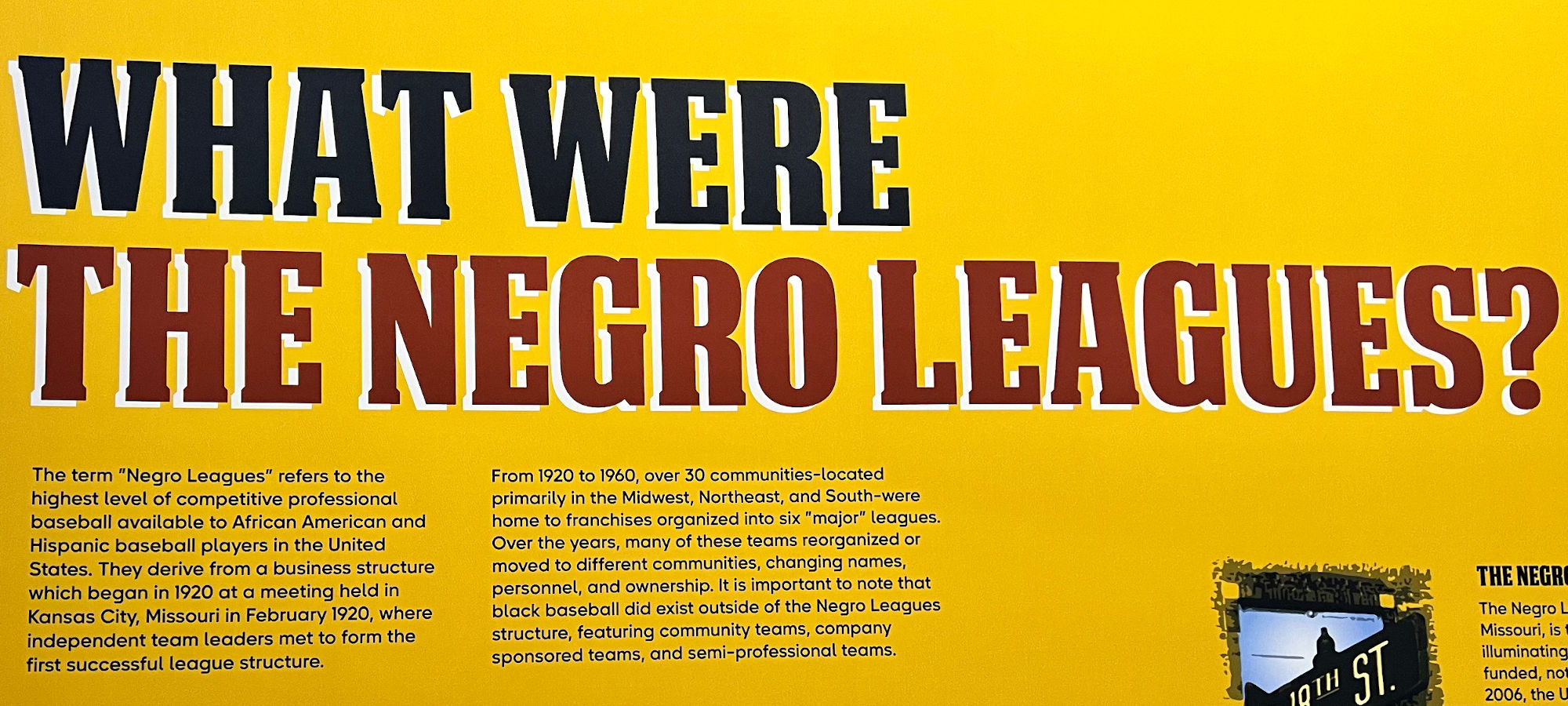
What were the Negro Leagues?
The term "Negro Leagues" refers to the highest level of competitive professional baseball available to African American and Hispanic baseball players in the United States. They derive from a business structure which began in 1920 at a meeting held in Kansas City, Missouri in February 1920, where independent team leaders met to form the first successful league structure.
From 1920 to 1960, over 30 communities - located primarily in the Midwest, Northeast, and South - were home to franchises organized into six "major" leagues. Over the years, many of these teams reorganized or moved to different communities, changing names, personnel, and ownership. It is important to note that black baseball did exist outside of the Negro Leagues structure, featuring community teams, company sponsored teams, and semi-professional teams.
The term "Negro Leagues" refers to the highest level of competitive professional baseball available to African American and Hispanic baseball players in the United States. They derive from a business structure which began in 1920 at a meeting held in Kansas City, Missouri in February 1920, where independent team leaders met to form the first successful league structure.
From 1920 to 1960, over 30 communities - located primarily in the Midwest, Northeast, and South - were home to franchises organized into six "major" leagues. Over the years, many of these teams reorganized or moved to different communities, changing names, personnel, and ownership. It is important to note that black baseball did exist outside of the Negro Leagues structure, featuring community teams, company sponsored teams, and semi-professional teams.

Strike up the Band
The heart of 18th and Vine was the Street Hotel owned by Reuben Street. The hotel housed the famous Blue and Rose Rooms, where baseball players often dined. Marching bands, such as the Elks Band seen here (circa 1938), would take to the streets when the Monarchs returned from a road trip. If the Monarchs arrived by train at Union Station, the band would greet them and boogie the 2.5 miles east to 18th Street in a royal display of appreciation.
The heart of 18th and Vine was the Street Hotel owned by Reuben Street. The hotel housed the famous Blue and Rose Rooms, where baseball players often dined. Marching bands, such as the Elks Band seen here (circa 1938), would take to the streets when the Monarchs returned from a road trip. If the Monarchs arrived by train at Union Station, the band would greet them and boogie the 2.5 miles east to 18th Street in a royal display of appreciation.
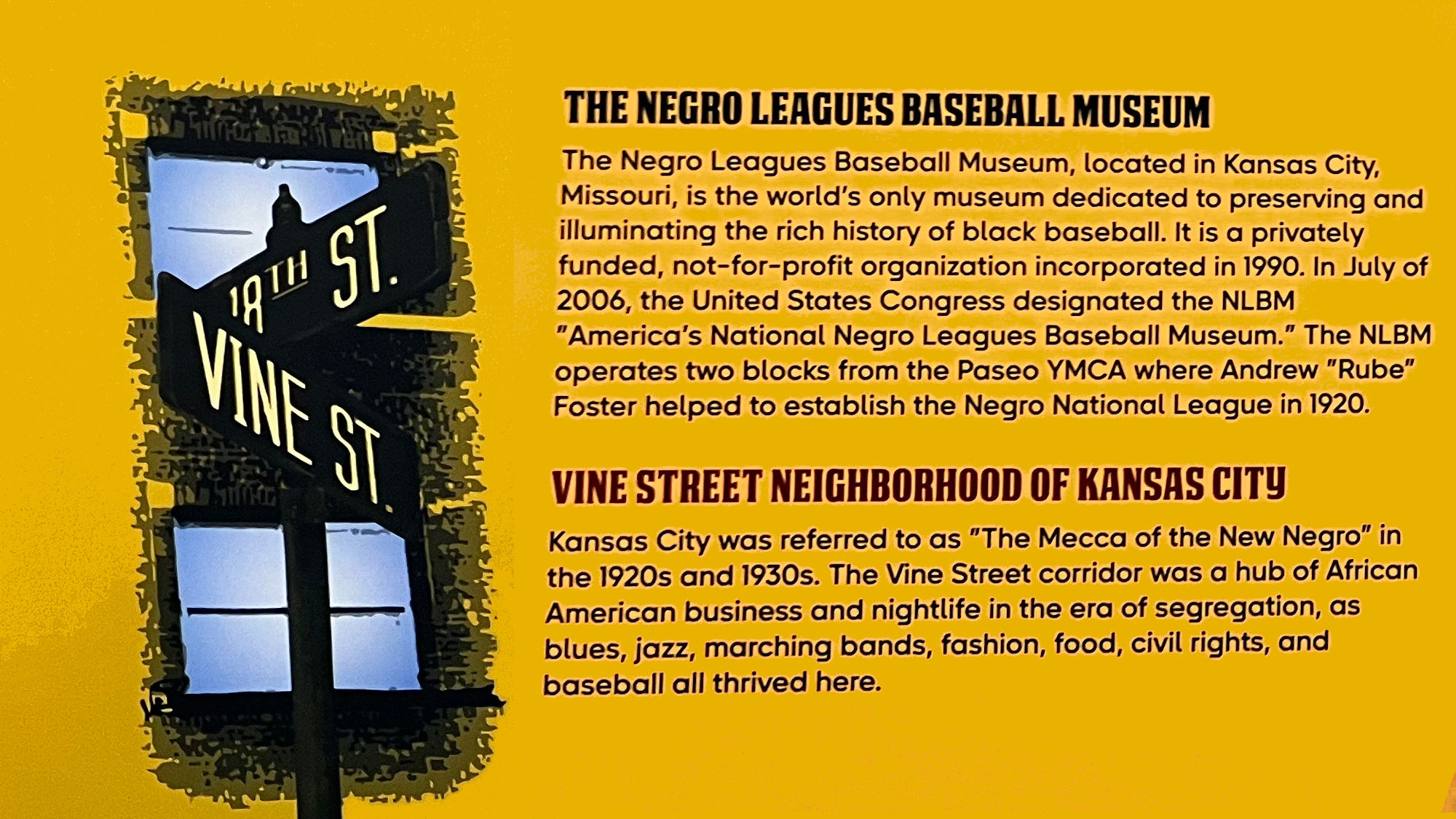
The Negro Leagues Baseball Museum
The Negro Leagues Baseball Museum, located in Kansas City, Missouri, is the world's only museum dedicated to preserving and illuminating the rich history of black baseball. It is a privately funded, not-for-profit organization incorporated in 1990. In July of 2006, the United States Congress designated the NLBM "America's National Negro Leagues Baseball Museum." The NLBM operates two blocks from the Paseo YMCA where Andrew "Rube" Foster helped to establish the Negro National League in 1920.
The Negro Leagues Baseball Museum, located in Kansas City, Missouri, is the world's only museum dedicated to preserving and illuminating the rich history of black baseball. It is a privately funded, not-for-profit organization incorporated in 1990. In July of 2006, the United States Congress designated the NLBM "America's National Negro Leagues Baseball Museum." The NLBM operates two blocks from the Paseo YMCA where Andrew "Rube" Foster helped to establish the Negro National League in 1920.
https://www.nlbm.com/
Vine Street Neighborhood of Kansas City
Kansas City was referred to as "The Mecca of the New Negro" in the 1920s and 1930s.
The Vine Street corridor was a hub of African American business and nightlife in the era of segregation, as blues, jazz, marching bands, fashion, food, civil rights, and baseball all thrived here.
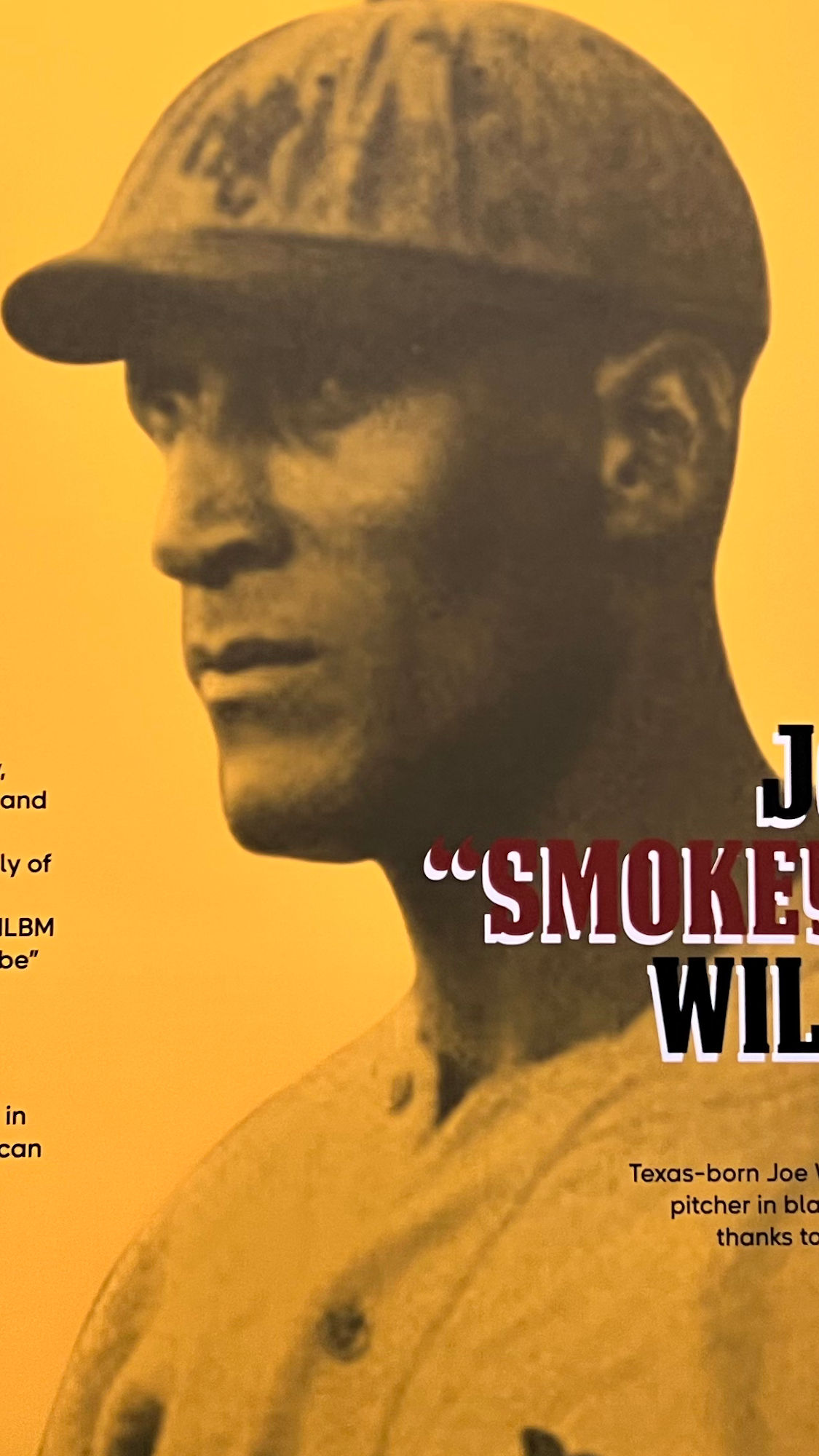
Joseph Smokey Joe Williams
Texas-born Joe Williams was the dominant pitcher in black baseball from 1910-1932 thanks to his very effective fastball.
Texas-born Joe Williams was the dominant pitcher in black baseball from 1910-1932 thanks to his very effective fastball.

- Posing for a Pic
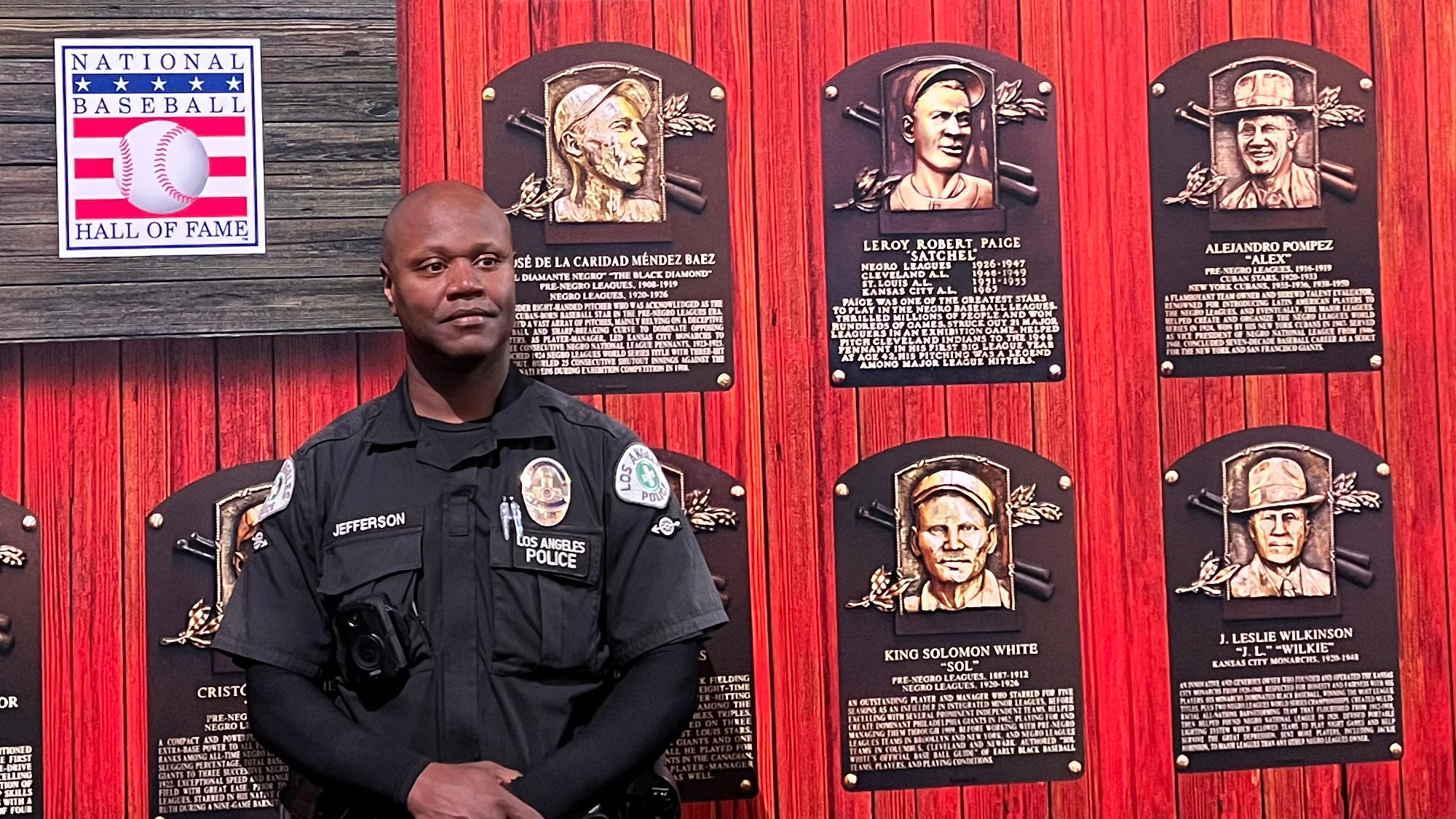
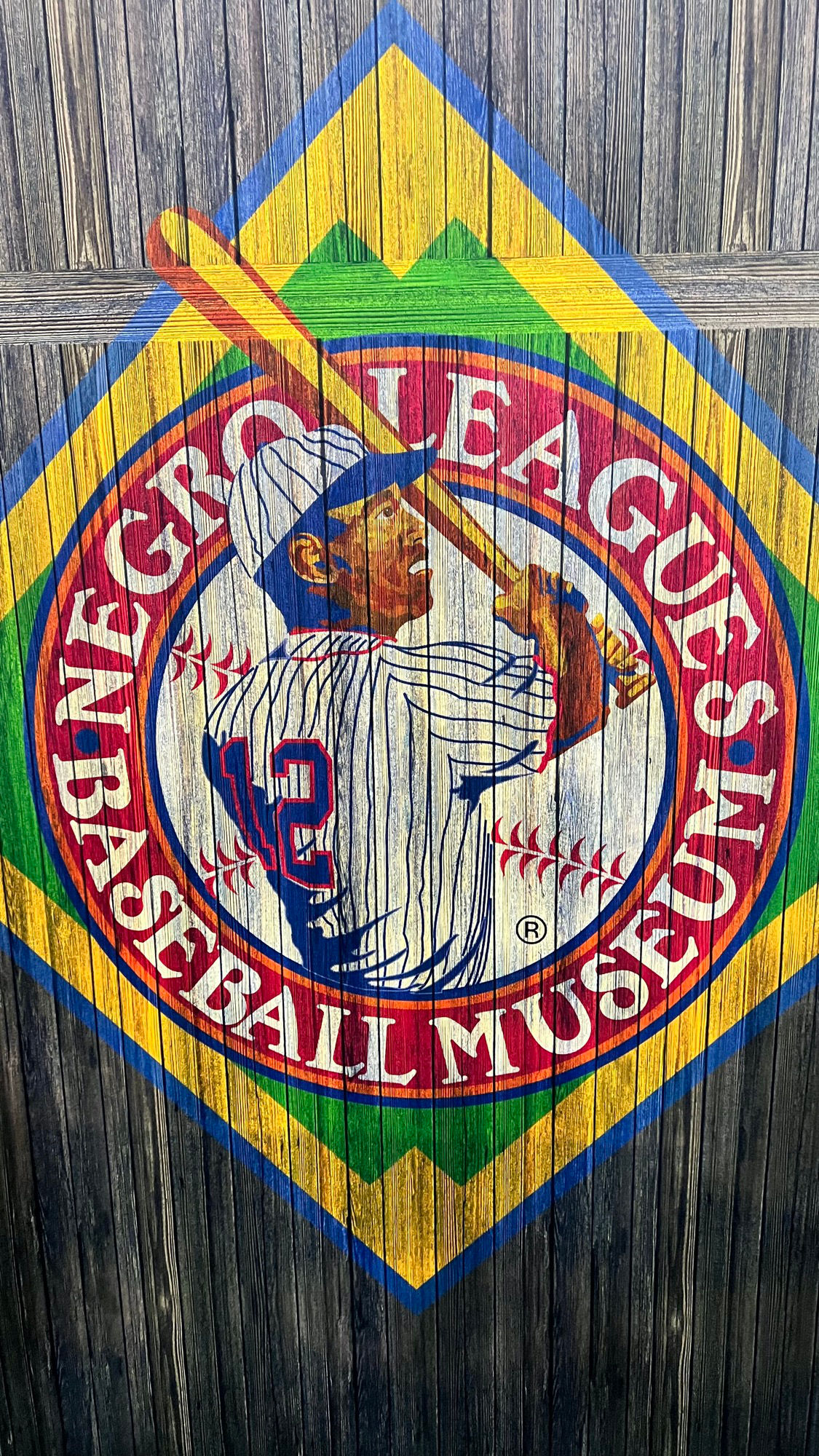

- Frank Floyd
Trainer Frank "Jew Baby" Floyd treats the legendary pitcher's arm. - Abe & Effa Manley
(1885-1952, 1897-1981)
The Manleys owned the very successful Newark Eagles baseball team, with Effa as the primary general manager. Her efforts as a league owner earned her induction into the National Baseball Hall of Fame in 2006 - Alex Pompez
An owner of the New York Cubans and other Negro League teams for many years, was an excellent scout of talent and helped bring several players to the Major Leagues. - Bob Motley
(1923)
The flamboyant Negro Leagues umpire was known for his athletic calls in the field.
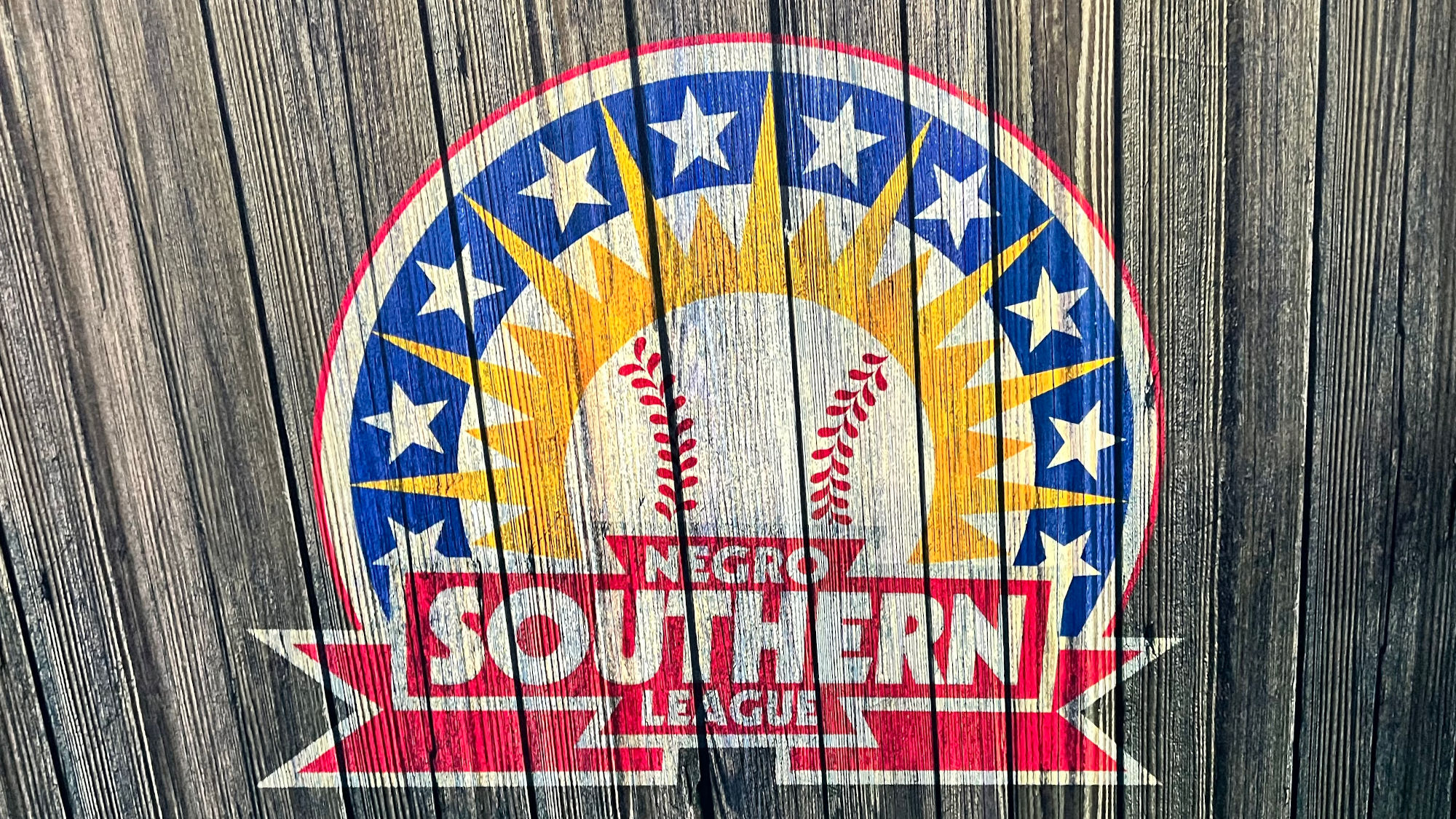
Southern
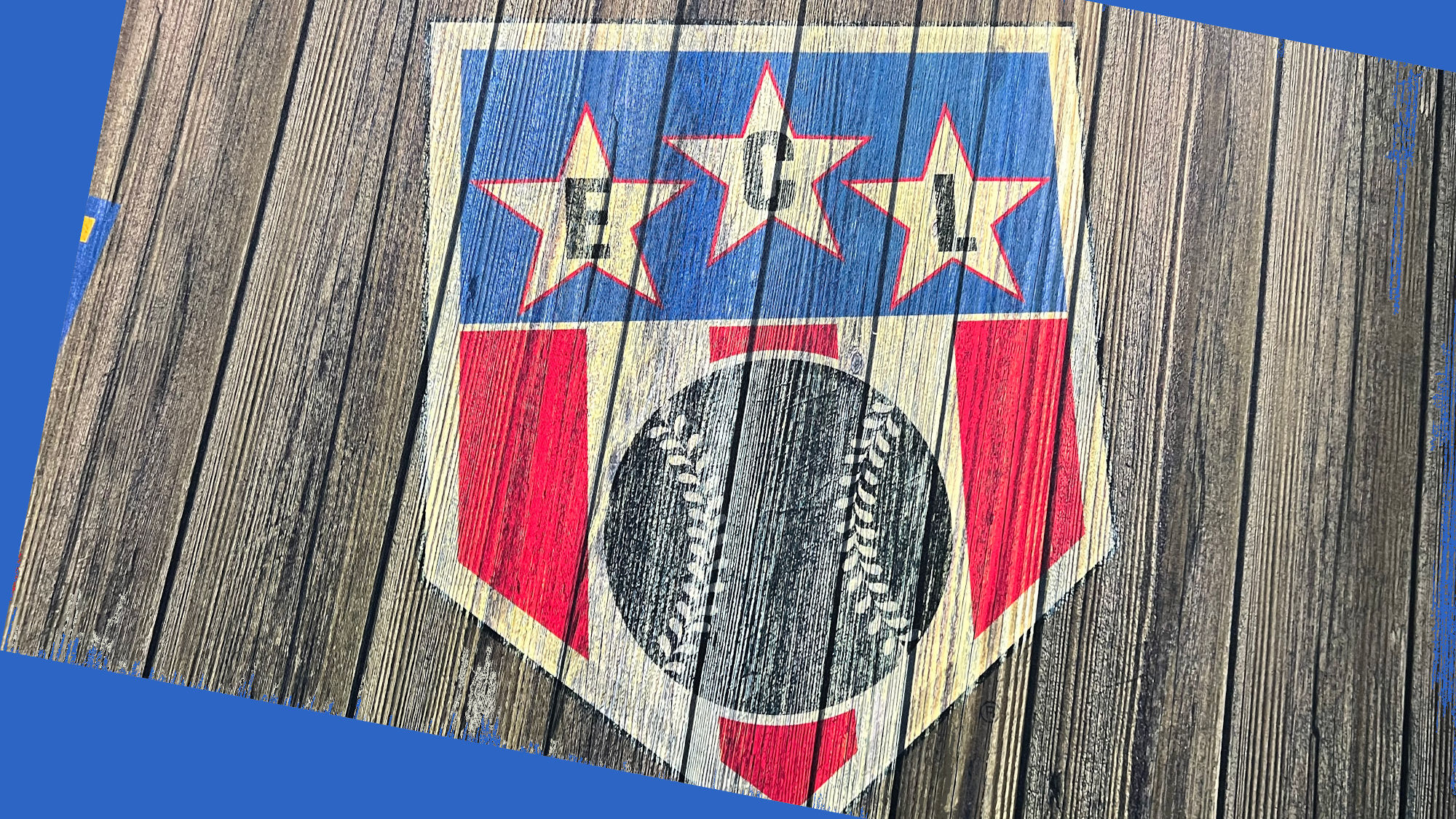
ECL
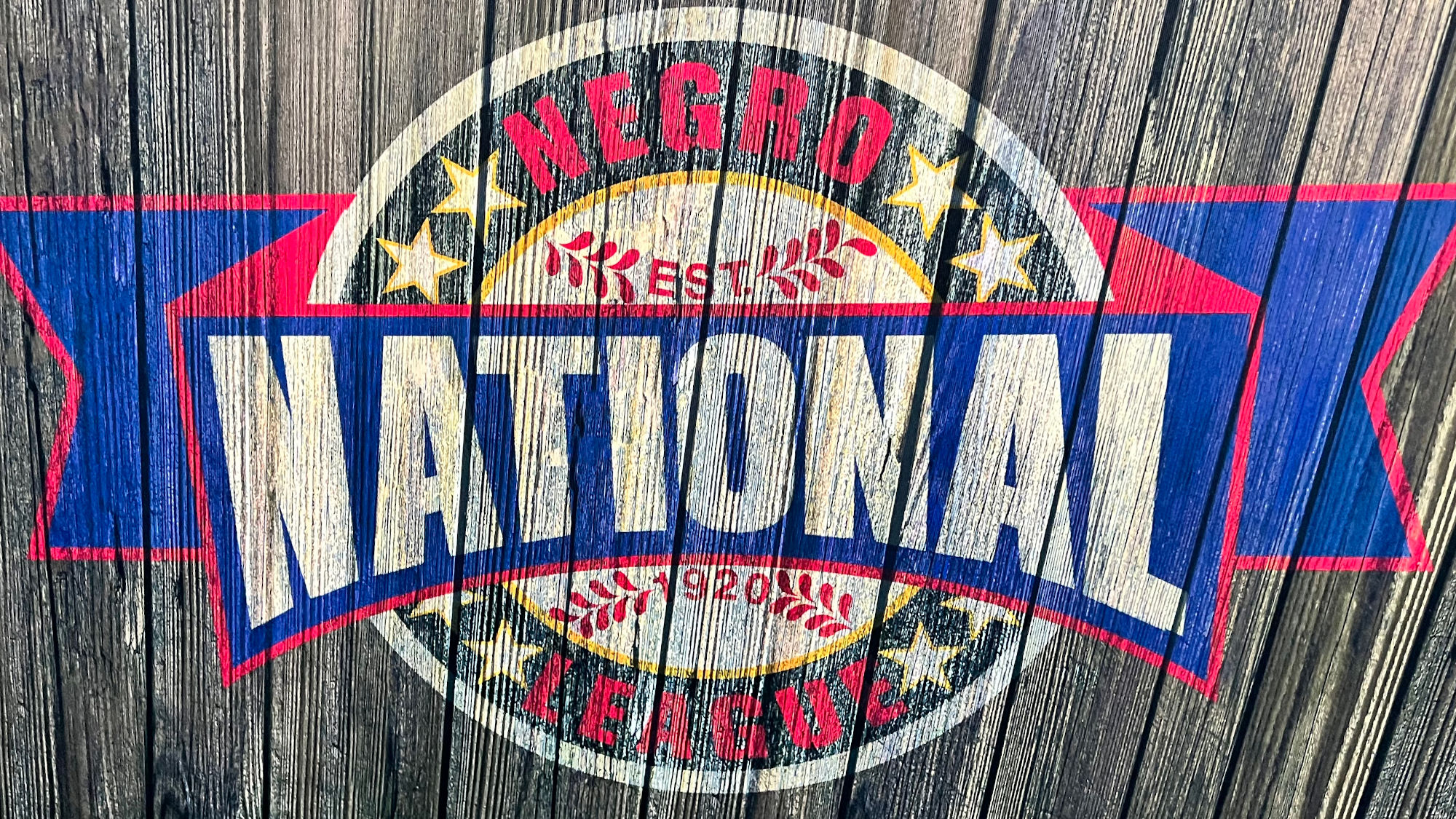
National
Established 1920
Established 1920

American
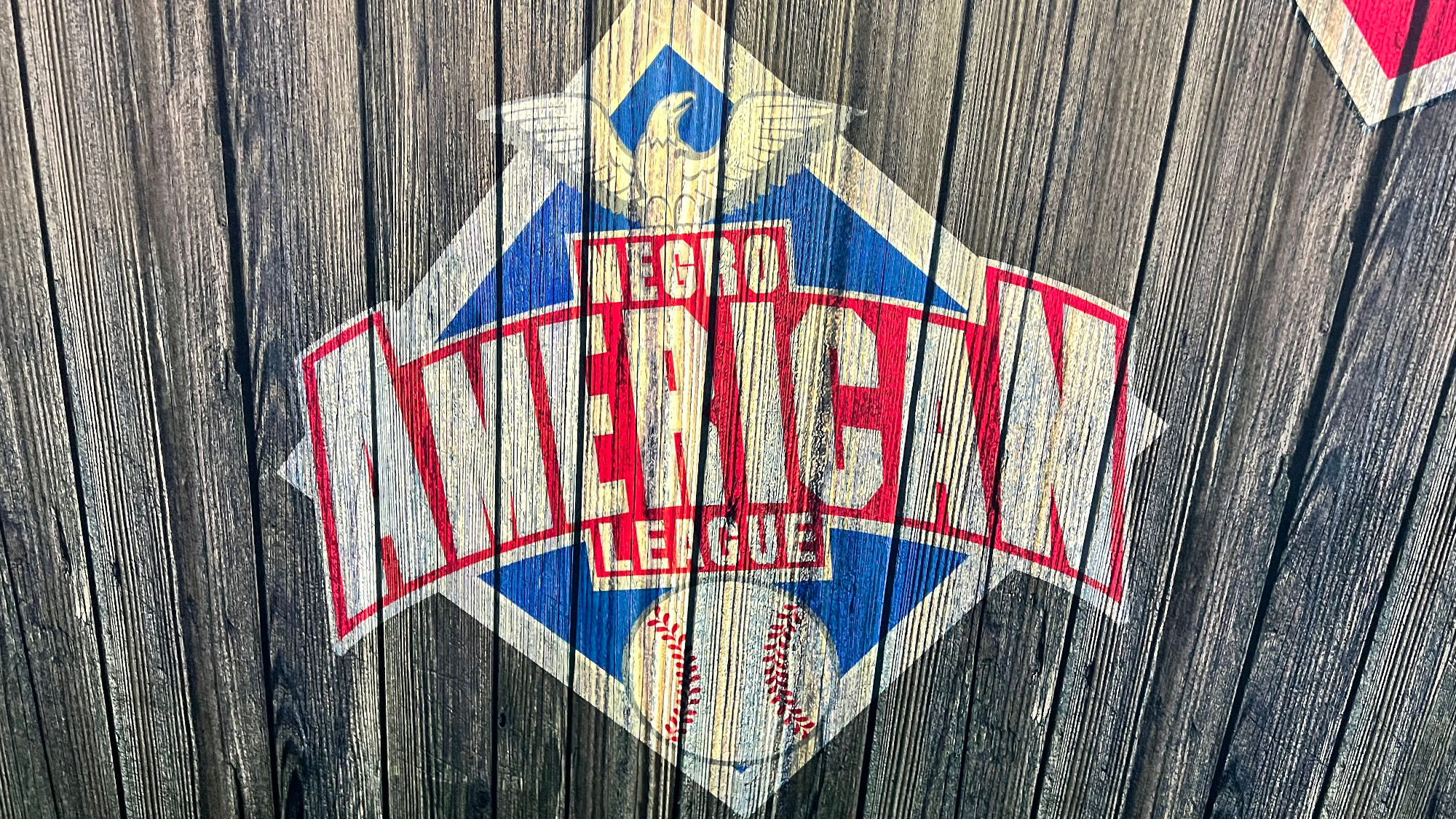
American
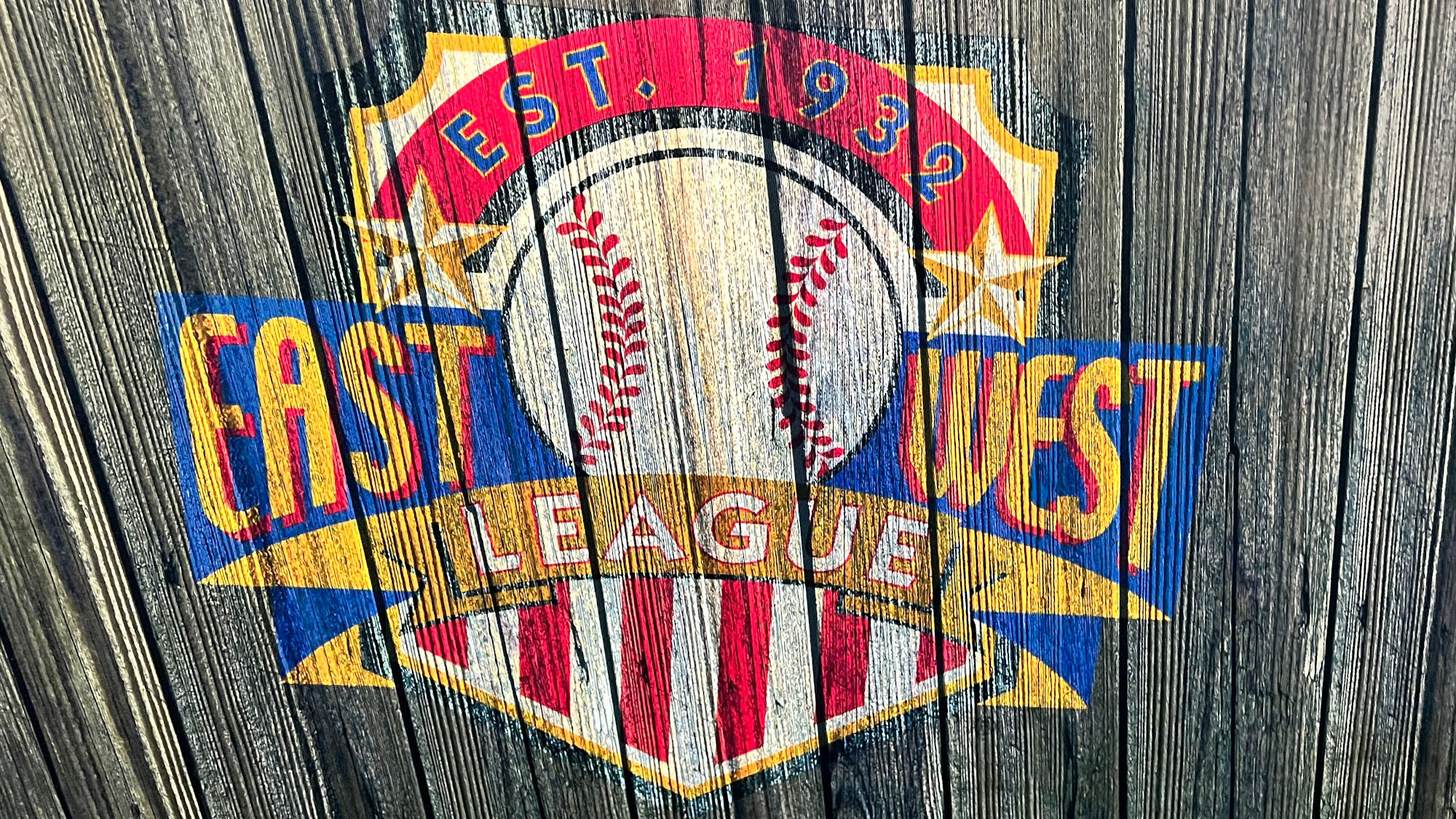
East West
Established 1932
Established 1932

Baseball Museum
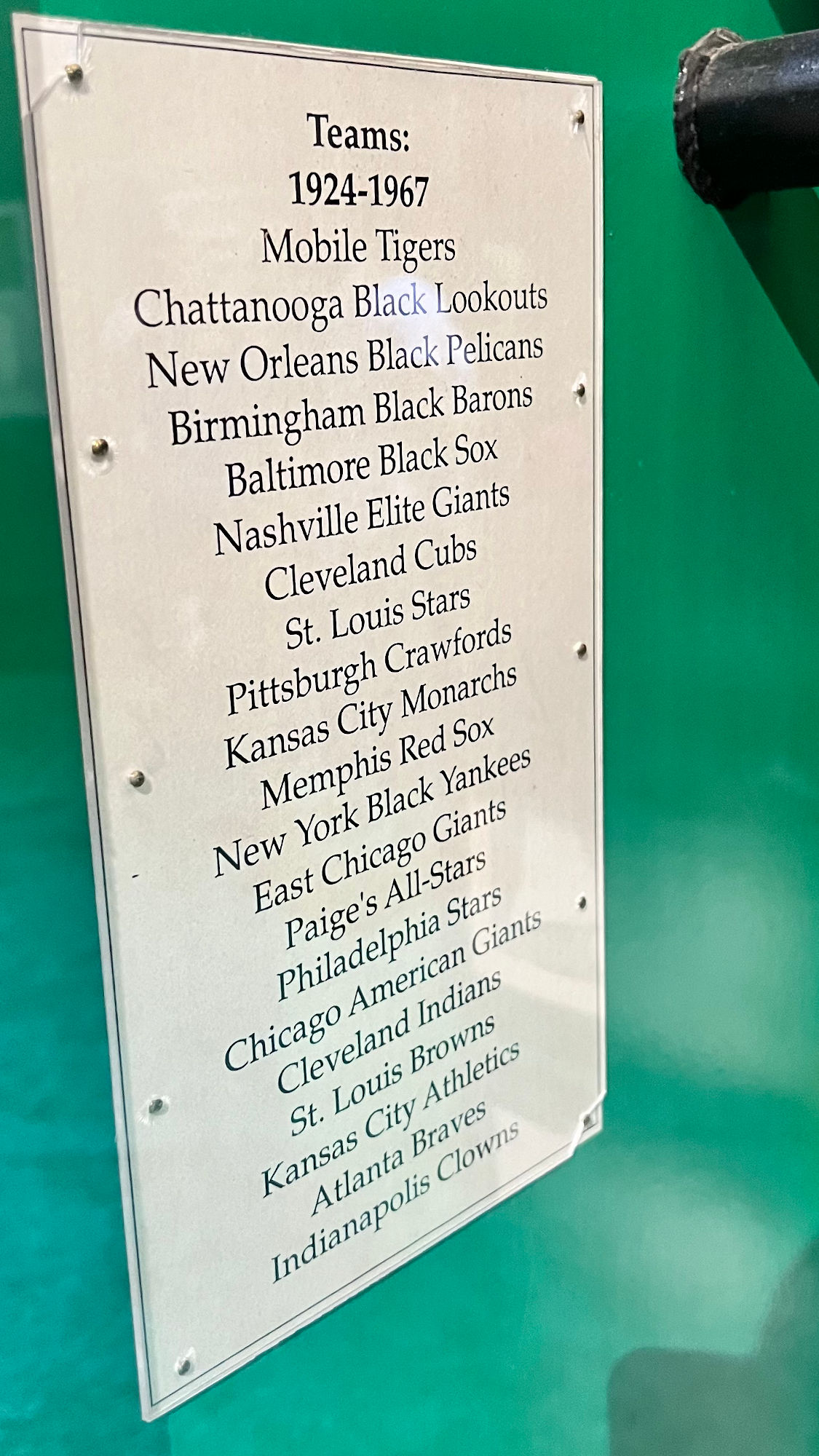
Teams 1924-1967
- Mobile Tigers
- Chattanooga Black Lookouts
- New Orleans Black Pelicans
- Birmingham Black Barons
- Baltimore Black Sox
- Nashville Elite Giants
- Cleveland Cubs
- St. Louis Stars
- Pittsburgh Crawfords
- Kansas City Monarchs
- Memphis Red Sox
- New York Black Yankees
- Fast Chicago Giants
- Paige's All-Stars
- Philadelphia Stars
- Chicago American Giants
- Cleveland Indians
- St. Louis Browns
- Kansas City Athletics
- Atlanta Braves
- Indianapolis Clowns
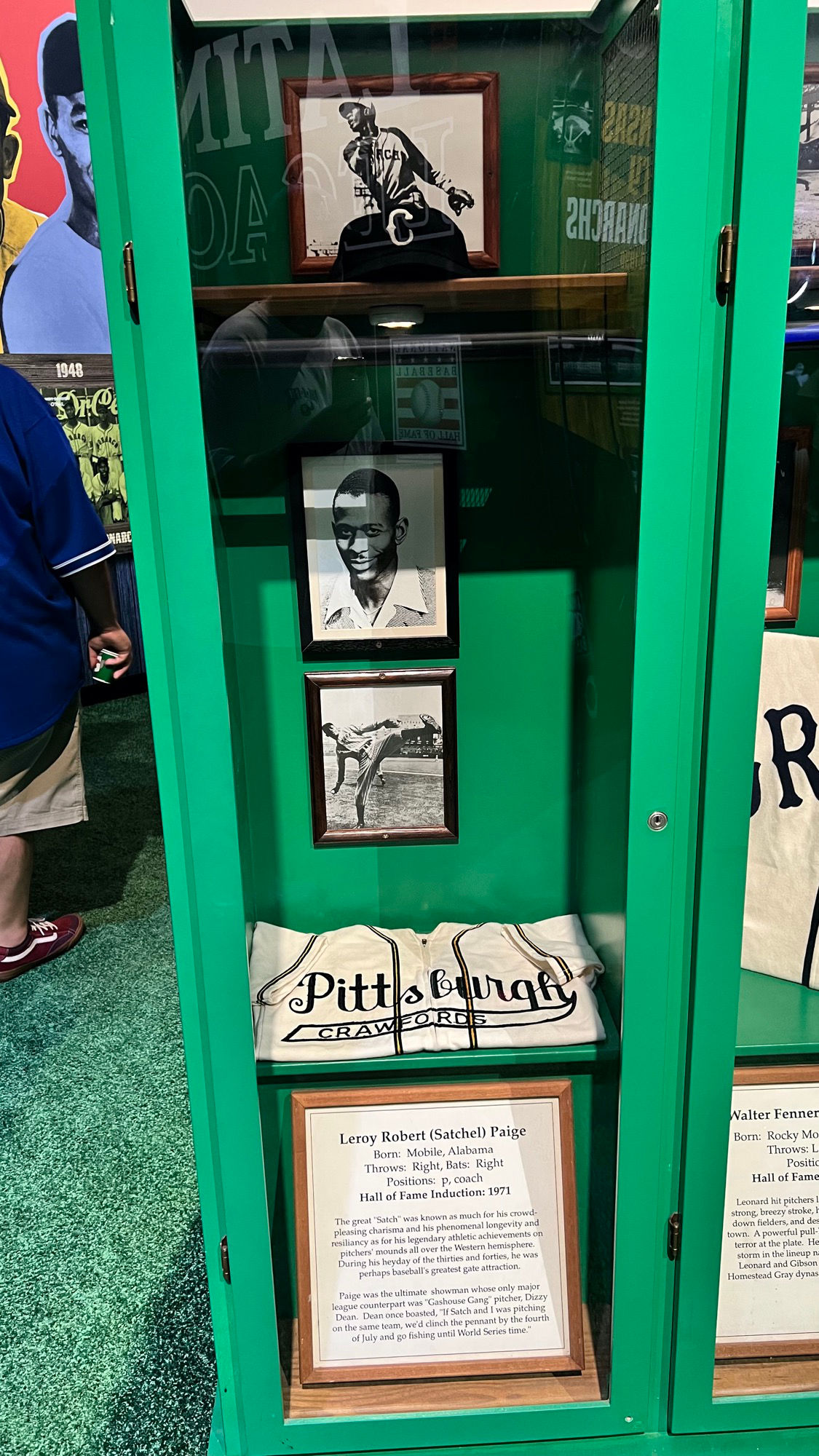
Leroy Robert (Satchel) Paige
- Born: Mobile, Alabama
- Throws: Right, Bats: Right
- Positions: P, COACH
- Hall of Fame Induction: 1971
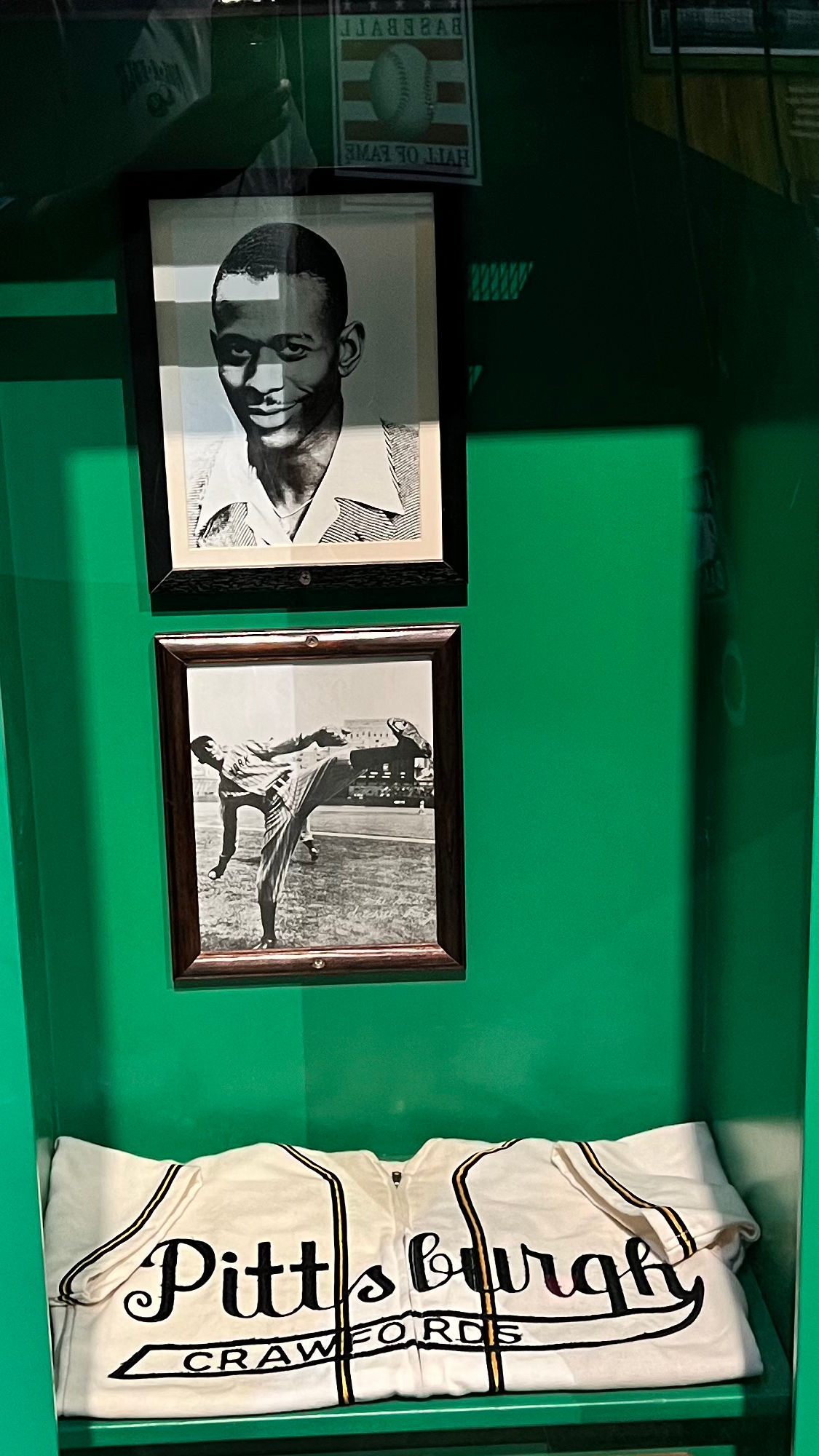
Leroy Robert (Satchel) Paige
The great "Satch" was known as much for his crowd pleasing charisma and his phenomenal longevity and resiliency as for his legendary athletic achievements on pitchers' mounds all over the Western hemisphere. During his heyday of the thirties and forties, he was perhaps baseball's greatest gate attraction. Paige was the ultimate showman whose only major league counterpart was "Gas House Gang" pitcher, Dizzy Dean. Dean once boasted, "If Satch and I was pitching on the same team, we'd clinch the pennant by the fourth of July and go fishing until World Series time."
The great "Satch" was known as much for his crowd pleasing charisma and his phenomenal longevity and resiliency as for his legendary athletic achievements on pitchers' mounds all over the Western hemisphere. During his heyday of the thirties and forties, he was perhaps baseball's greatest gate attraction. Paige was the ultimate showman whose only major league counterpart was "Gas House Gang" pitcher, Dizzy Dean. Dean once boasted, "If Satch and I was pitching on the same team, we'd clinch the pennant by the fourth of July and go fishing until World Series time."
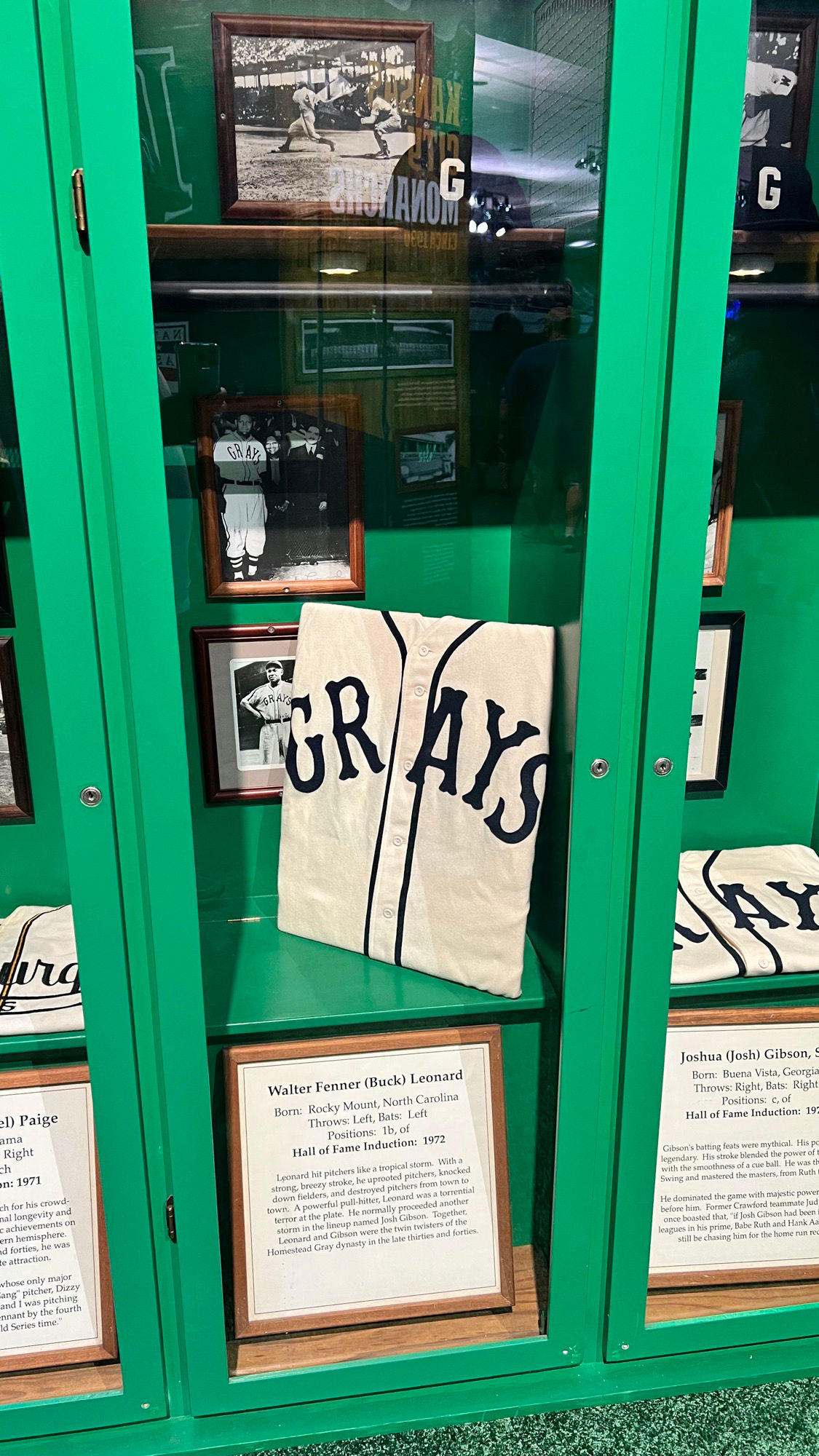
Walter Fenner (Buck) Leonard
- Born: Rocky Mount, North Carolina
- Throws: Left, Bats: Left
- Positions: 1B, OF
- Hall of Fame Induction: 1972
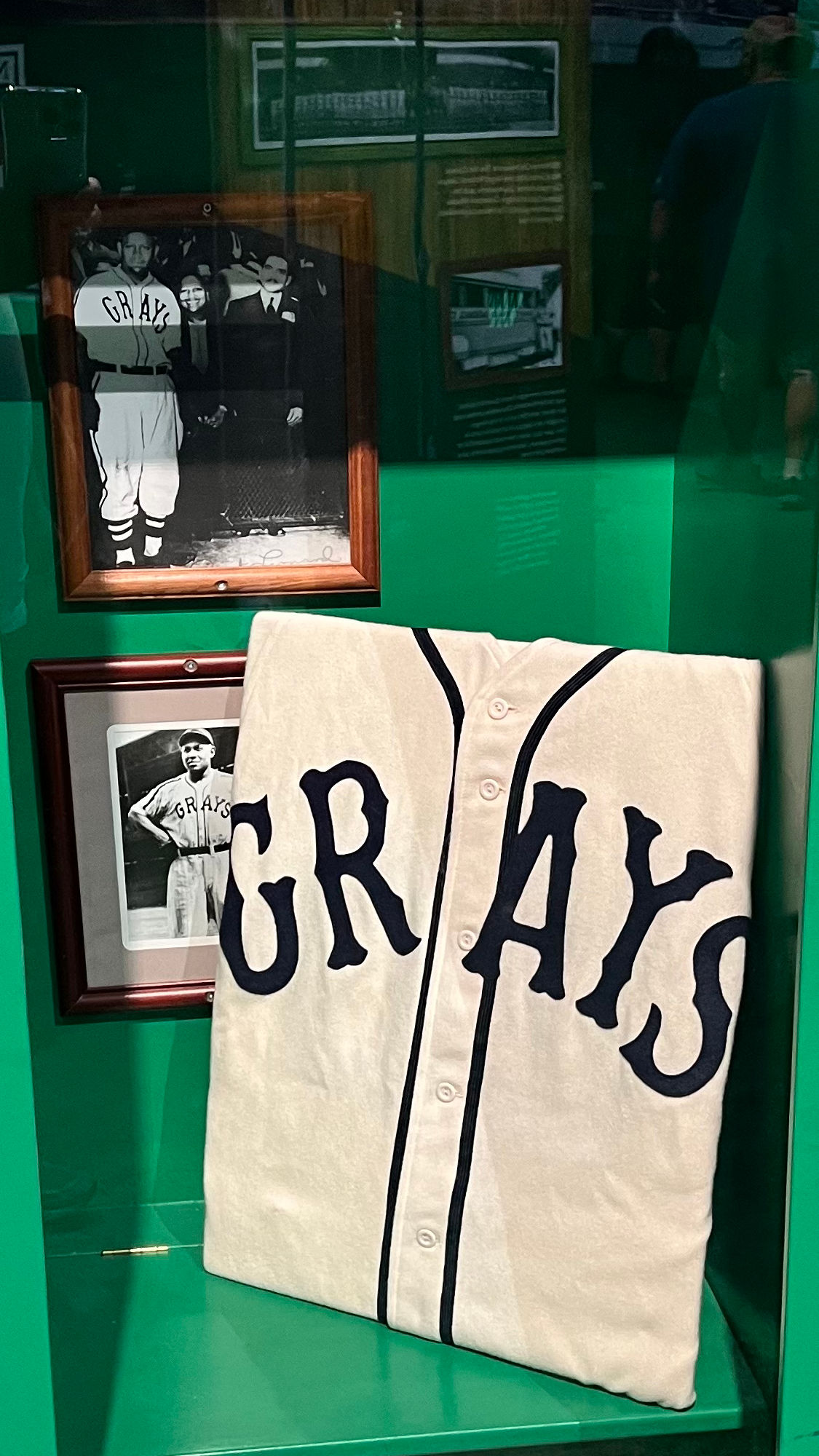
Walter Fenner (Buck) Leonard
Leonard hit pitchers like a tropical storm. With a strong, breezy stroke, he uprooted pitchers, knocked down fielders, and destroyed pitchers from town to town. A powerful pull-hitter, Leonard was a torrential terror at the plate. He normally proceeded another storm in the lineup named Josh Gibson. Together, Leonard and Gibson were the twin twisters of the Homestead Gray dynasty in the late thirties and forties.
Leonard hit pitchers like a tropical storm. With a strong, breezy stroke, he uprooted pitchers, knocked down fielders, and destroyed pitchers from town to town. A powerful pull-hitter, Leonard was a torrential terror at the plate. He normally proceeded another storm in the lineup named Josh Gibson. Together, Leonard and Gibson were the twin twisters of the Homestead Gray dynasty in the late thirties and forties.

Joshua (Josh) Gibson, Sr.
- Born: Buena Vista, Georgia
- Throws: Right, Bats: Right
- Positions: C, OF
- Hall of Fame Induction: 1972
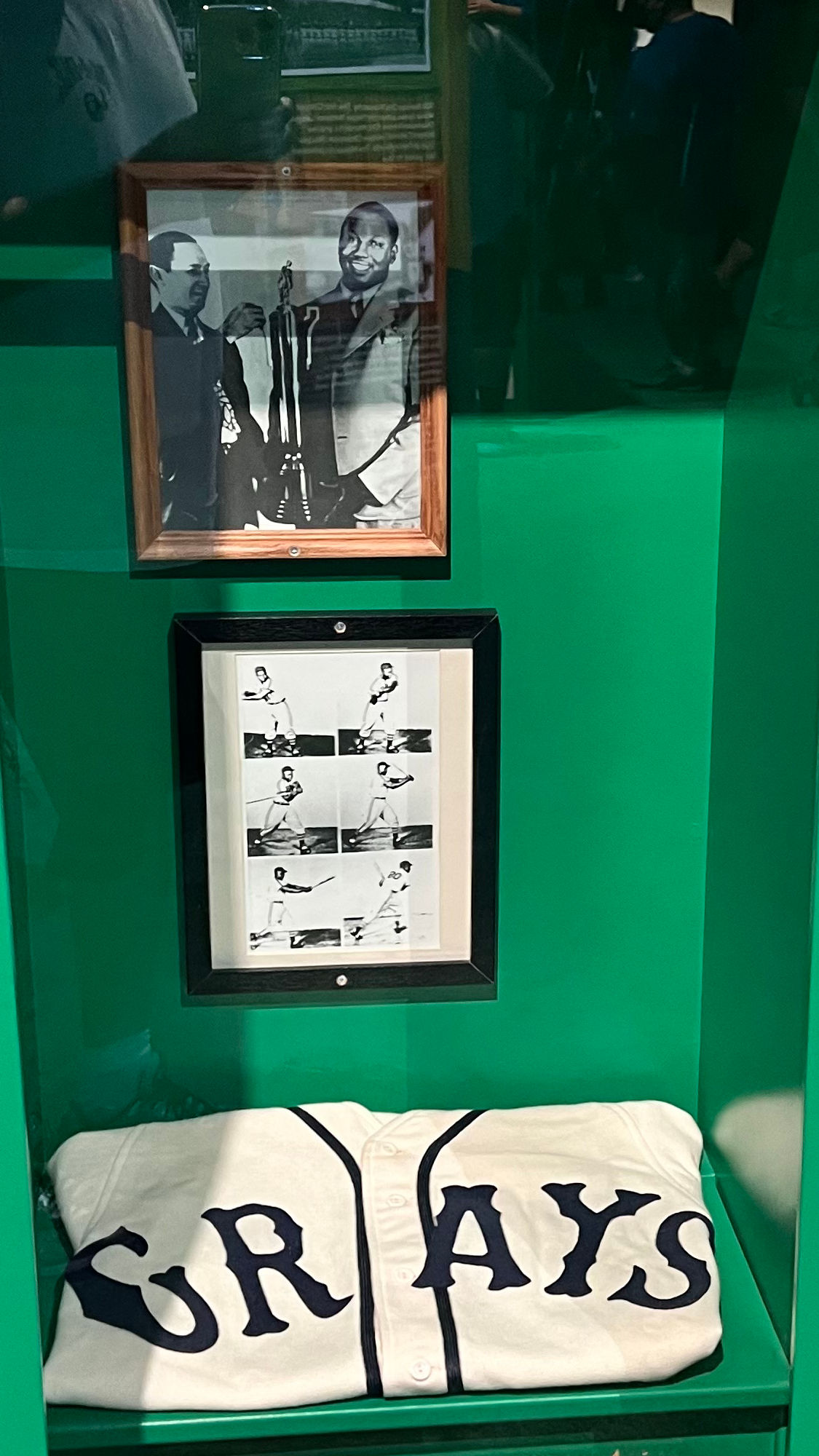
Joshua (Josh) Gibson, Sr.
Gibson's batting feats were mythical. His power was legendary. His stroke blended the power of the piston with the smoothness of a cue ball. He was the King of Swing and mastered the masters, from Ruth to Reggie.
He dominated the game with majestic power like none before him. Former Crawford teammate Judy Johnson once boasted that, "if Josh Gibson had been in the big leagues in his prime, Babe Ruth and Hank Aaron would still be chasing him for the home run record."
Gibson's batting feats were mythical. His power was legendary. His stroke blended the power of the piston with the smoothness of a cue ball. He was the King of Swing and mastered the masters, from Ruth to Reggie.
He dominated the game with majestic power like none before him. Former Crawford teammate Judy Johnson once boasted that, "if Josh Gibson had been in the big leagues in his prime, Babe Ruth and Hank Aaron would still be chasing him for the home run record."
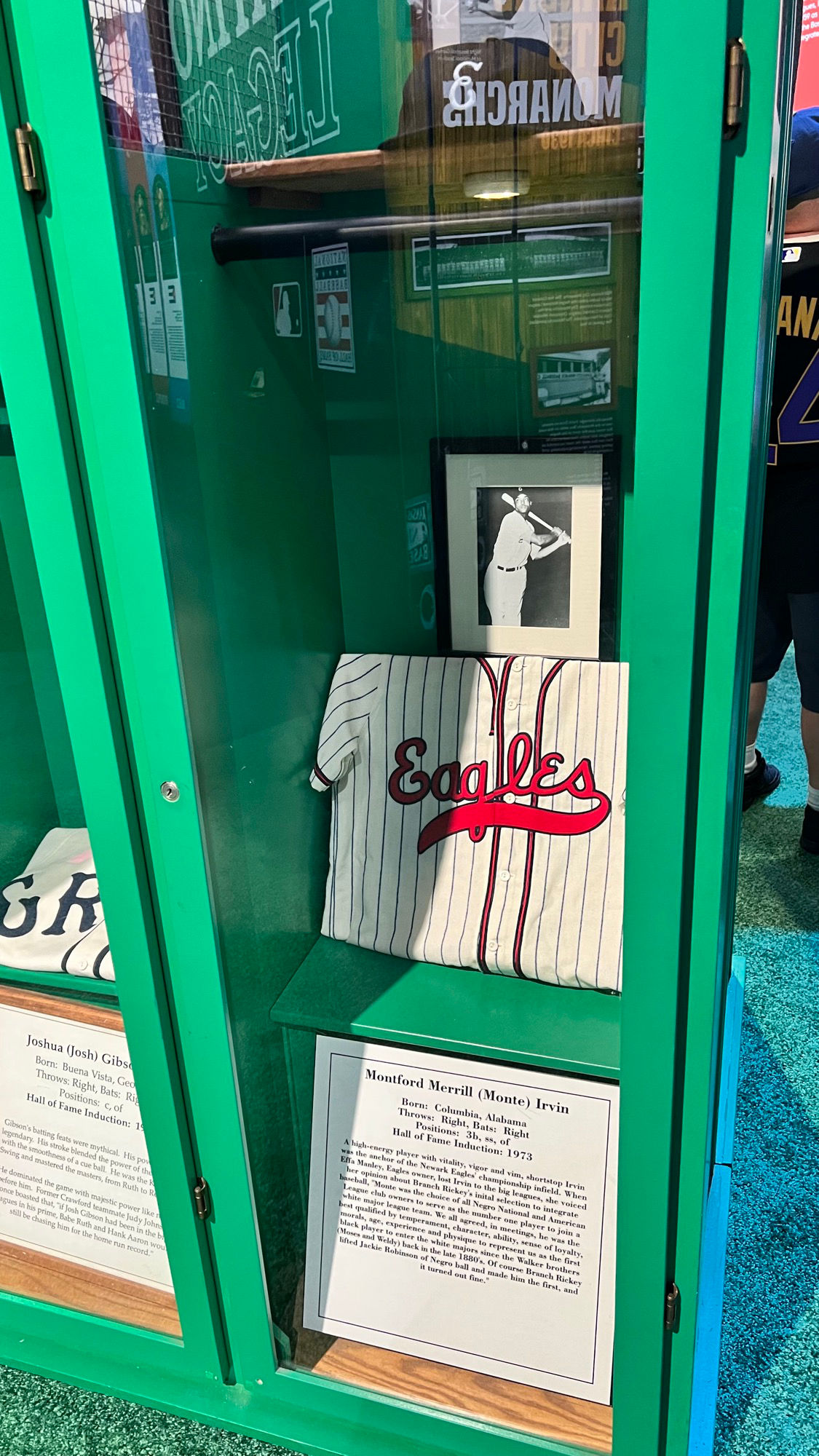
Montford Merrill (Monte) Irwin
- Born: Columbia, Alabama
- Throws: Right Bats: Right
- Positions: 3B, SS, OF
- Hall of Fame Induction: 1973

Montford Merrill (Monte) Irwin
A high-energy player with vitality, vigor and vim, shortstop Irvin was the anchor of the Newark Eagles championship infield. When Effa Manley, Eagles owner, lost Irvin to the big leagues, she voiced her opinion about Branch Rickey's initial selection to integrate baseball, "Monte was the choice of all Negro National and American League club owners to serve as the number one player to join a white major league team. We all agreed, in meetings, he was the best qualified by temperament, character, ability, sense of loyalty, morals, age, experience and physique to represent us as the first black player to enter the white majors since the Walker brothers (Moses and Weldy) back in the late 1880's. Of course Branch Rickey lifted Jackie Robinson of Negro ball and made him the first, and it turned out fine.
A high-energy player with vitality, vigor and vim, shortstop Irvin was the anchor of the Newark Eagles championship infield. When Effa Manley, Eagles owner, lost Irvin to the big leagues, she voiced her opinion about Branch Rickey's initial selection to integrate baseball, "Monte was the choice of all Negro National and American League club owners to serve as the number one player to join a white major league team. We all agreed, in meetings, he was the best qualified by temperament, character, ability, sense of loyalty, morals, age, experience and physique to represent us as the first black player to enter the white majors since the Walker brothers (Moses and Weldy) back in the late 1880's. Of course Branch Rickey lifted Jackie Robinson of Negro ball and made him the first, and it turned out fine.
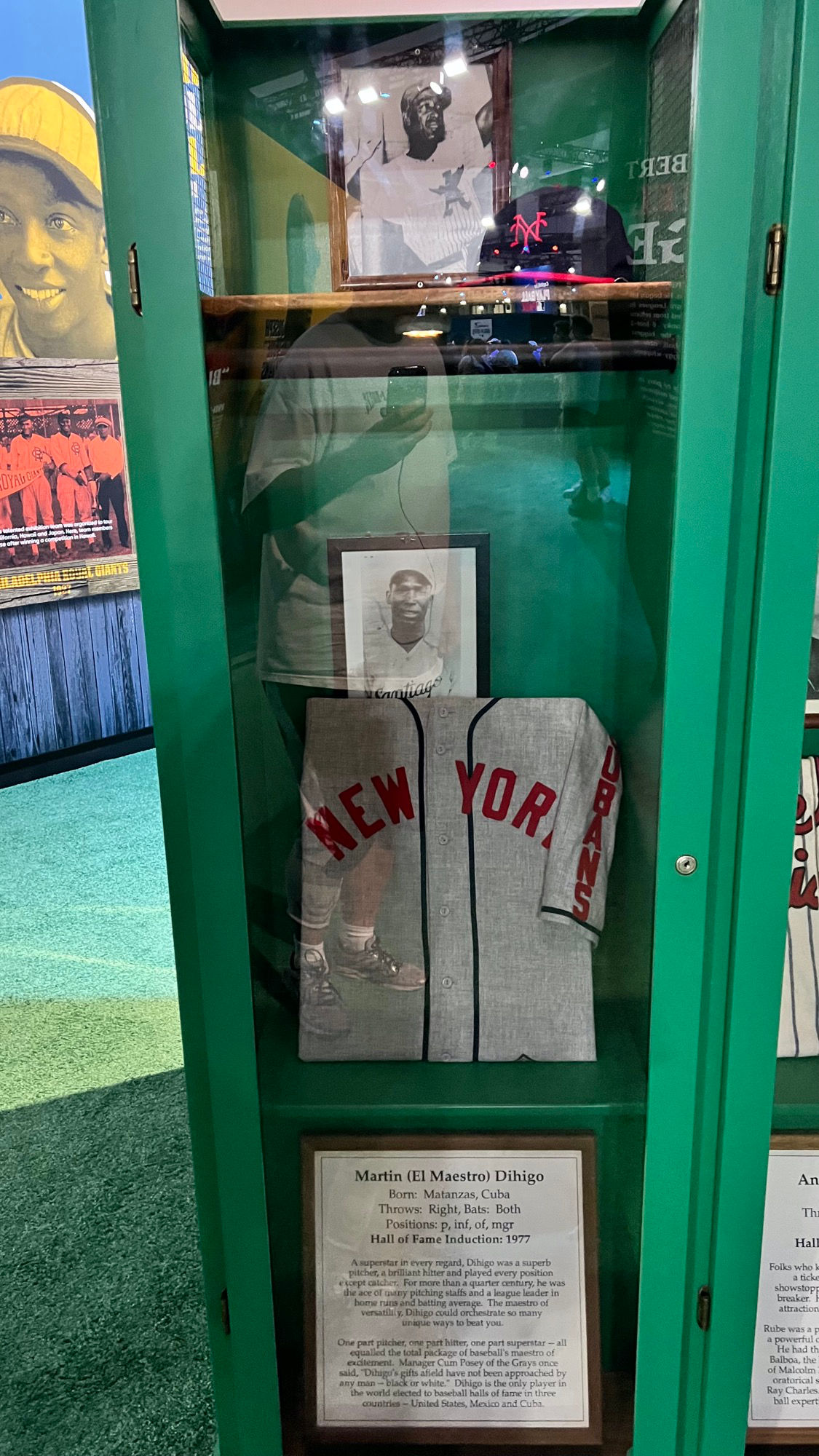
Martin (El Maestro) Dihigo
- Born: Matanzas, Cuba
- Throws: Right, Bats: Both
- Positions: P, INF, OF, MGR
- Hall of Fame Induction: 1977
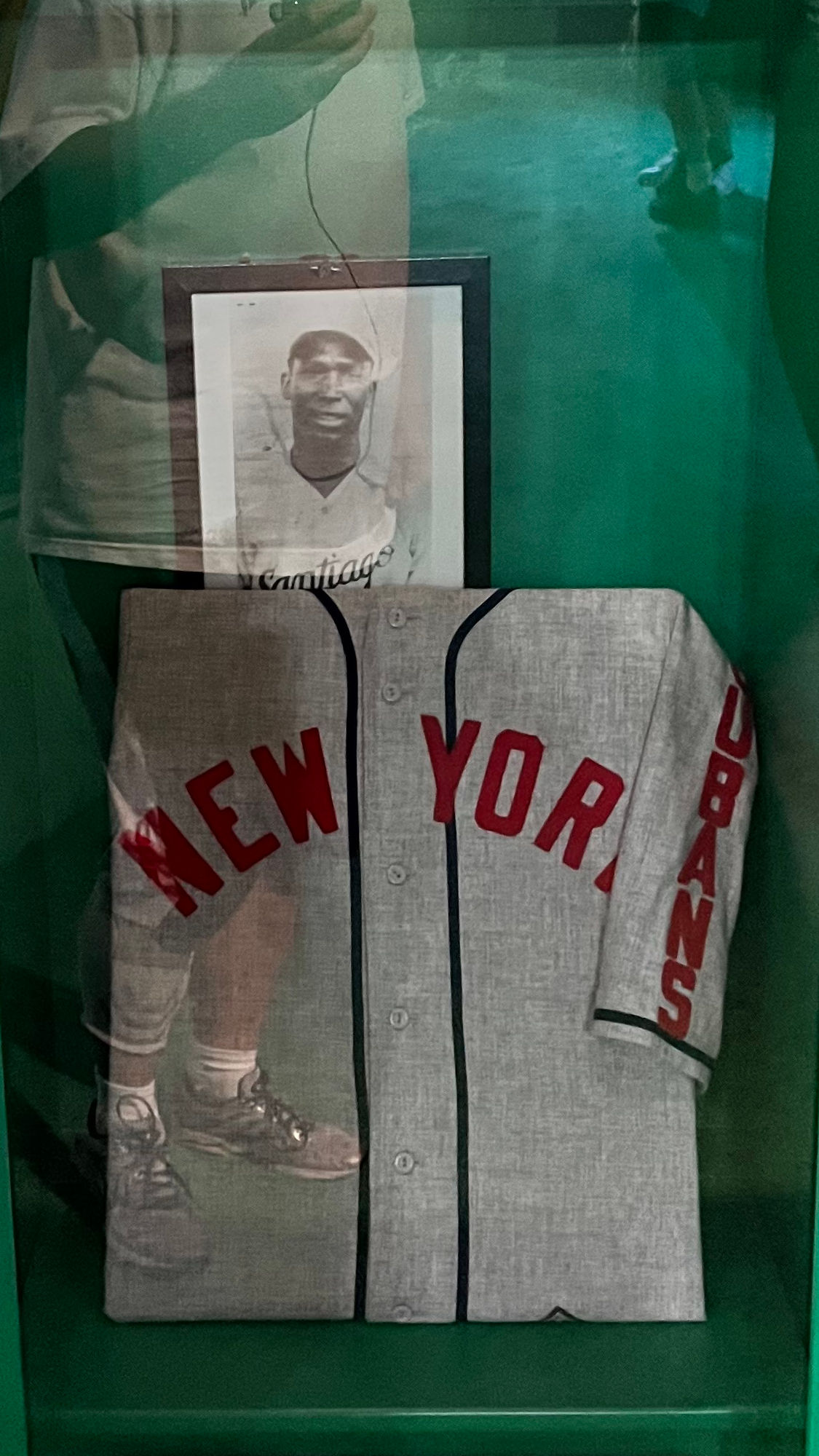
Martin (El Maestro) Dihigo
A superstar in every regard, Dihigo was a superb pitcher, a brilliant hitter and played every position except catcher. For more than a quarter century, he was the ace of many pitching staffs and a league leader in home runs and batting average. The Maestro of versatility, Dihigo could orchestrate so many unique ways to beat you. One part pitcher, one part hitter, one part superstar - all equaled the total package of baseball's maestro of excitement. Manager Cum Posey of the Grays once said, "Dihigo's gifts afield have not been approached by any man black or white." Dihigo is the only player in the world elected to baseball halls of fame in three countries - United States, Mexico, and Cuba.
A superstar in every regard, Dihigo was a superb pitcher, a brilliant hitter and played every position except catcher. For more than a quarter century, he was the ace of many pitching staffs and a league leader in home runs and batting average. The Maestro of versatility, Dihigo could orchestrate so many unique ways to beat you. One part pitcher, one part hitter, one part superstar - all equaled the total package of baseball's maestro of excitement. Manager Cum Posey of the Grays once said, "Dihigo's gifts afield have not been approached by any man black or white." Dihigo is the only player in the world elected to baseball halls of fame in three countries - United States, Mexico, and Cuba.
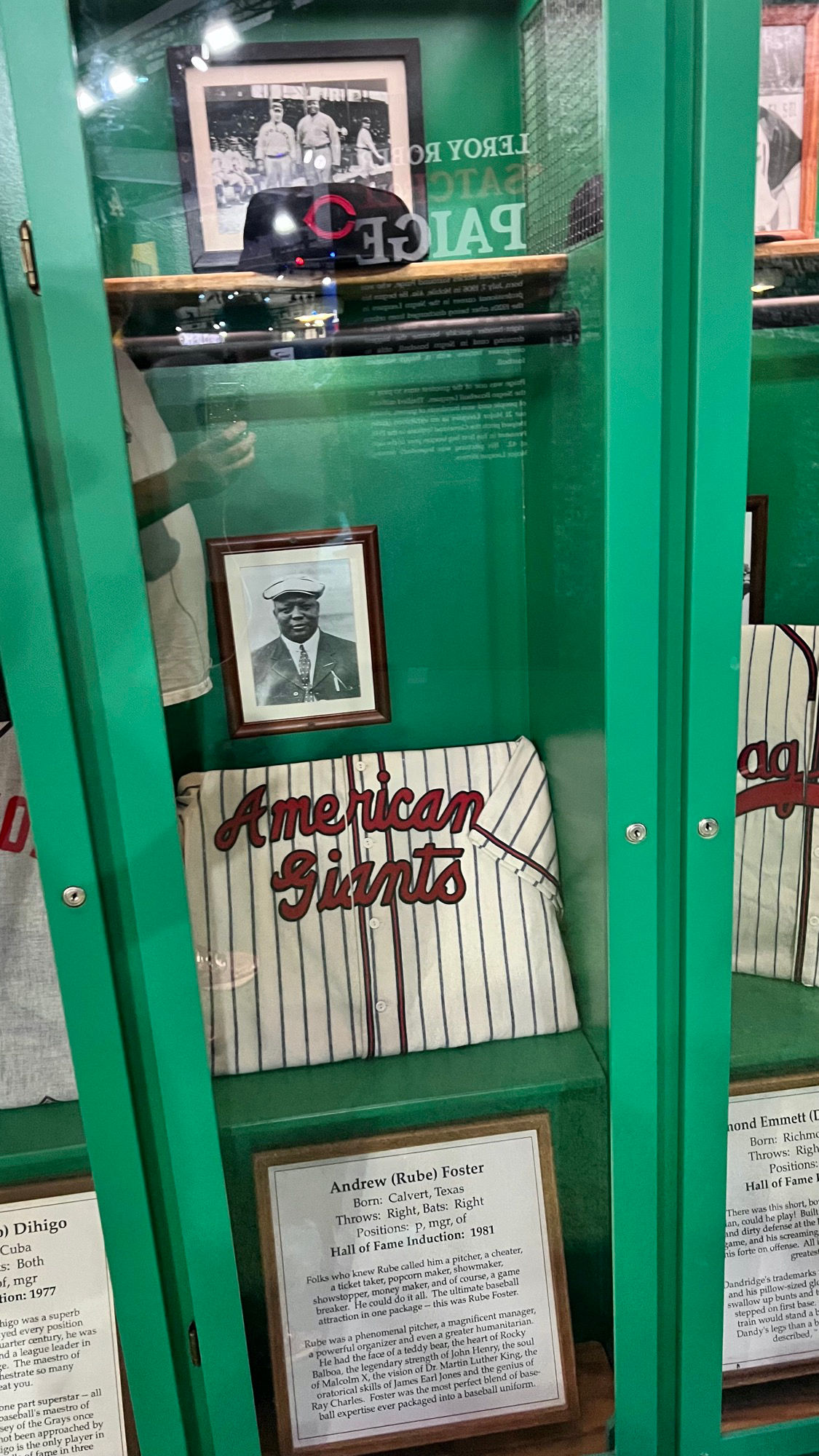
Andrew (Rube) Foster
- Born: Calvert, Texas
- Throws: Right, Bats: Right
- Positions: P, MGR, OF
- Hall of Fame Induction: 1981

Andrew (Rube) Foster
Folks who knew Rube called him a pitcher, a cheater, a ticket taker, popcorn maker, show maker, showstopper, money maker, and of course a game breaker. He could do it all. The ultimate baseball attraction in one package - this was Rube Foster.
Rube was a phenomenal pitcher, a magnificent manager, a powerful organizer, and even a greater humanitarian. He had the face of a teddy bear, the heart of Rocky Balboa, the legendary strength of John Henry, the soul of Malcolm X, the vision of Dr. Martin Luther King, the oratorical skills of lames Earl Jones, and the genius of Ray Charles. Foster was the most perfect blend of baseball expertise ever packaged into a baseball uniform.
Folks who knew Rube called him a pitcher, a cheater, a ticket taker, popcorn maker, show maker, showstopper, money maker, and of course a game breaker. He could do it all. The ultimate baseball attraction in one package - this was Rube Foster.
Rube was a phenomenal pitcher, a magnificent manager, a powerful organizer, and even a greater humanitarian. He had the face of a teddy bear, the heart of Rocky Balboa, the legendary strength of John Henry, the soul of Malcolm X, the vision of Dr. Martin Luther King, the oratorical skills of lames Earl Jones, and the genius of Ray Charles. Foster was the most perfect blend of baseball expertise ever packaged into a baseball uniform.

Raymond Emmett (Dandy) Dandridge
- Born: Richmond, Virginia
- Throws: Right Bats: Right
- Positions: 2B, SS, 3B
- Hall of Fame Induction: 1987
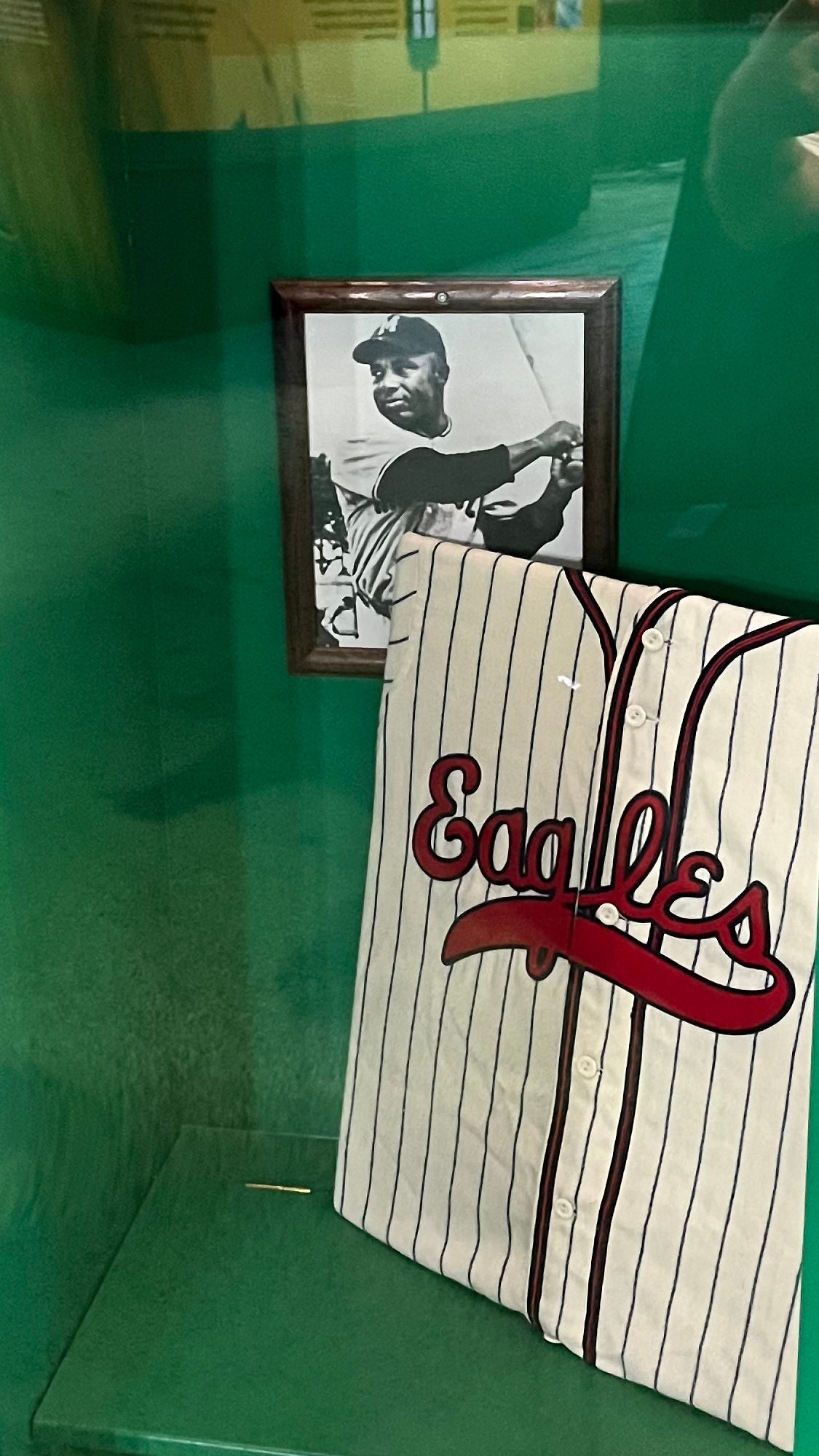
Raymond Emmett (Dandy) Dandridge
There was this short, bow-legged man named Ray. Man, could he play! Built low to the ground, his down and dirty defense at the hot corner was his gift to the game, and his screaming, "Look out!" line drives were his forte on offense. All in all, he was one of baseball's greatest performers.
Dandridge's trademarks were his horseshoe-shaped legs and his pillow-sized glove, coupled with the ability to swallow up bunts and toss out runners just before they stepped on first base. The standard joke was "that a train would stand a better chance of going through Dandy's legs than a baseball." He was as one writer described, "a third base Houdini."
There was this short, bow-legged man named Ray. Man, could he play! Built low to the ground, his down and dirty defense at the hot corner was his gift to the game, and his screaming, "Look out!" line drives were his forte on offense. All in all, he was one of baseball's greatest performers.
Dandridge's trademarks were his horseshoe-shaped legs and his pillow-sized glove, coupled with the ability to swallow up bunts and toss out runners just before they stepped on first base. The standard joke was "that a train would stand a better chance of going through Dandy's legs than a baseball." He was as one writer described, "a third base Houdini."
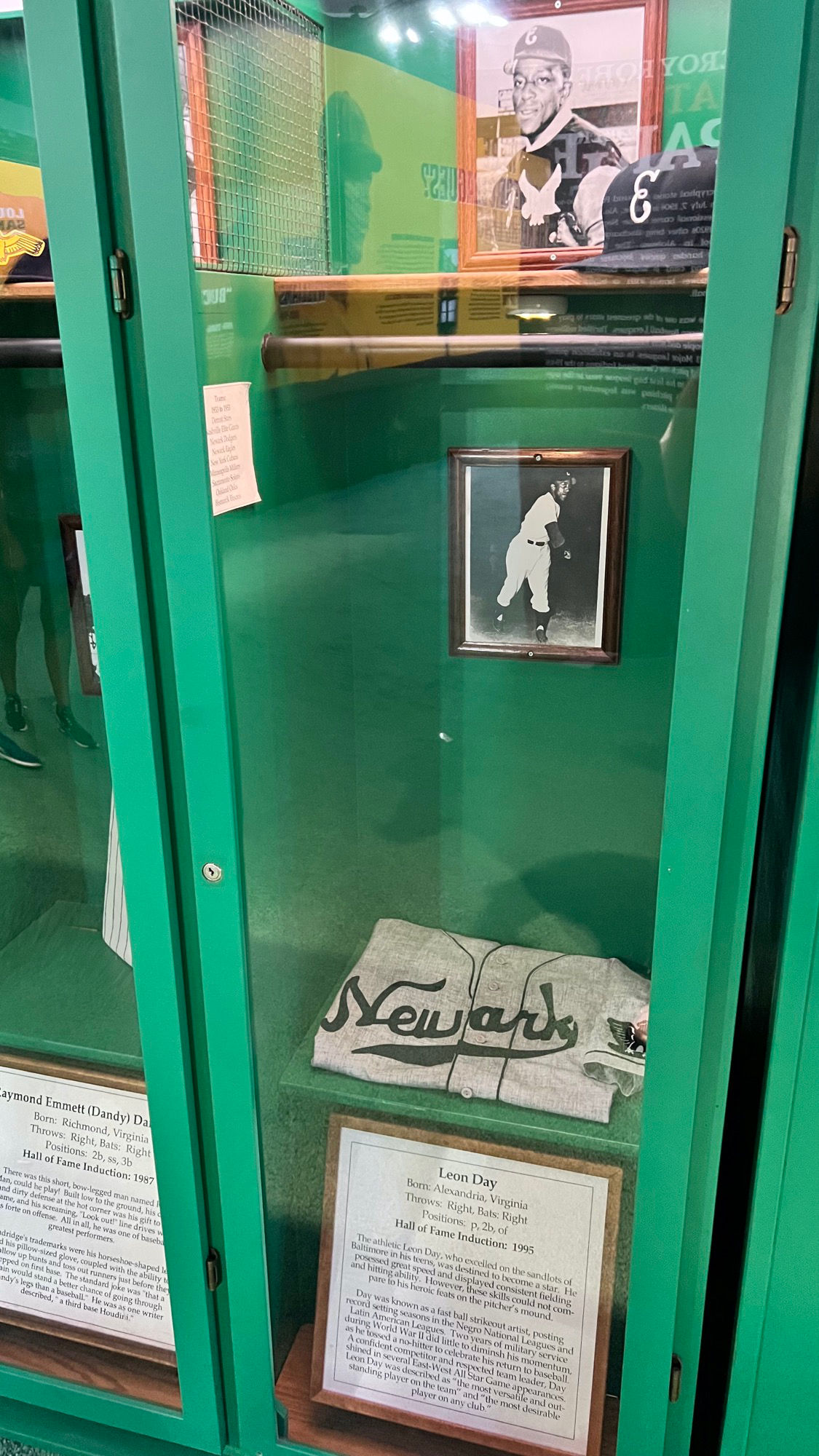
Leon Day
- Born: Alexandria, Virginia
- Throws: Right, Bats: Right
- Positions: P, 2B, OF
- Hall of Fame Induction: 1995
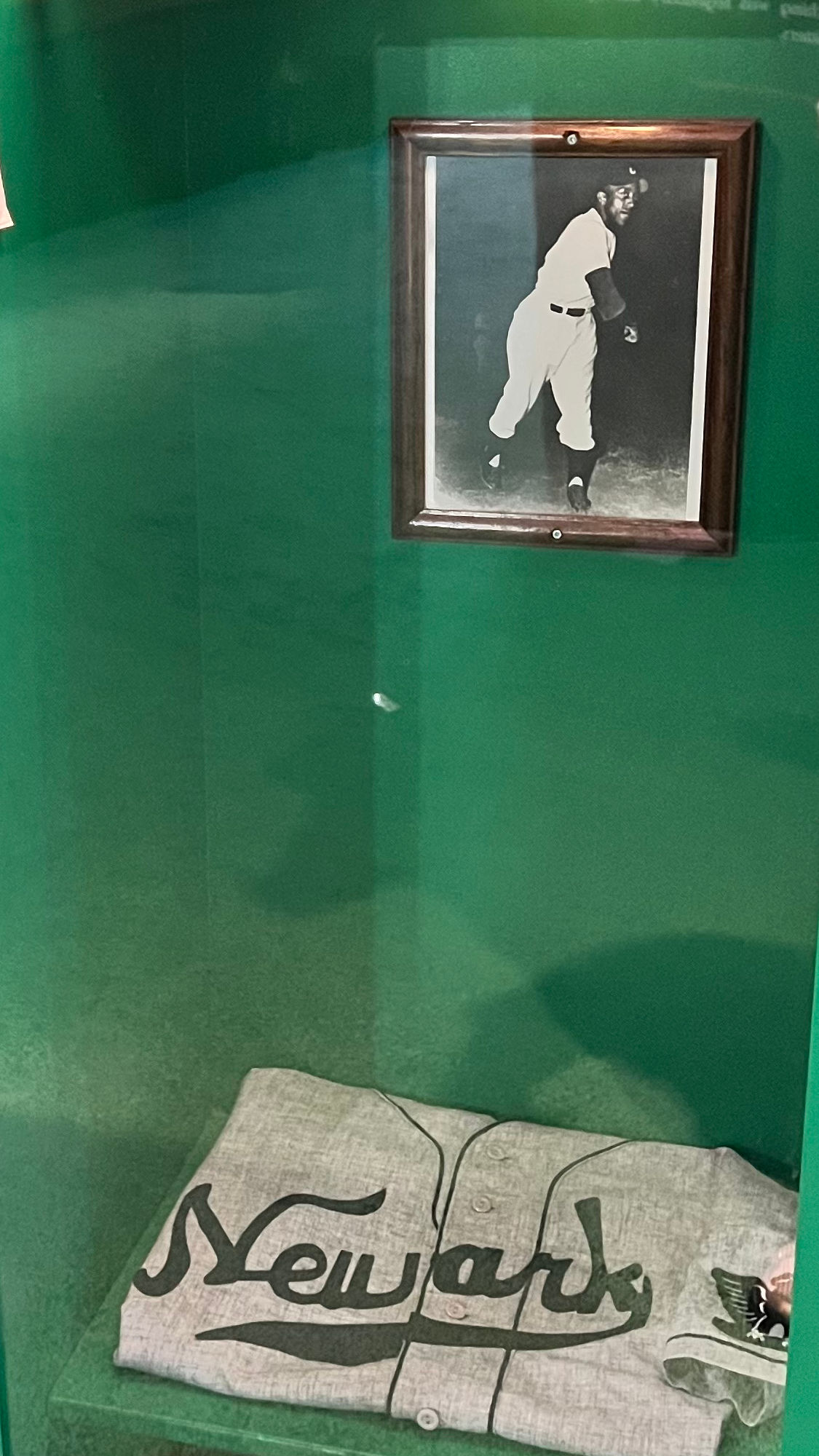
Leon Day
The athletic Leon Day, who excelled on the sandlots of Baltimore in his teens, was destined to become a star. He possessed great speed and displayed consistent fielding and hitting ability. However, these skills could not compare to his heroic feats on the pitcher's mound.
Day was known as a fast ball strikeout artist, posting record setting seasons in the Negro National Leagues and Latin American Leagues. Two years of military service during World War II did little to diminish his momentum, as he tossed a no-hitter to celebrate his return to baseball. A confident competitor and respected team leader, Day shined in several East-West All Star Game appearances. Leon Day was described as "the most versatile and outstanding player on the team" and "the most desirable player on any club."
The athletic Leon Day, who excelled on the sandlots of Baltimore in his teens, was destined to become a star. He possessed great speed and displayed consistent fielding and hitting ability. However, these skills could not compare to his heroic feats on the pitcher's mound.
Day was known as a fast ball strikeout artist, posting record setting seasons in the Negro National Leagues and Latin American Leagues. Two years of military service during World War II did little to diminish his momentum, as he tossed a no-hitter to celebrate his return to baseball. A confident competitor and respected team leader, Day shined in several East-West All Star Game appearances. Leon Day was described as "the most versatile and outstanding player on the team" and "the most desirable player on any club."

Joseph Williams
Teams:
- Born: Seguin, Texas
- Throws: Right, Bats: Right
- Positions: P, OF, 1B, MGR
- Hall of Fame Induction: 1999
Teams:
- New York Lincoln Giants
- Mohawk Giants
- Chicago American Giants
- Atlanta City Bacharach Ciants
- Hilldale Daisies
- Brooklyn Royal Giants
- Homestead Grays
- Detroit Wolves
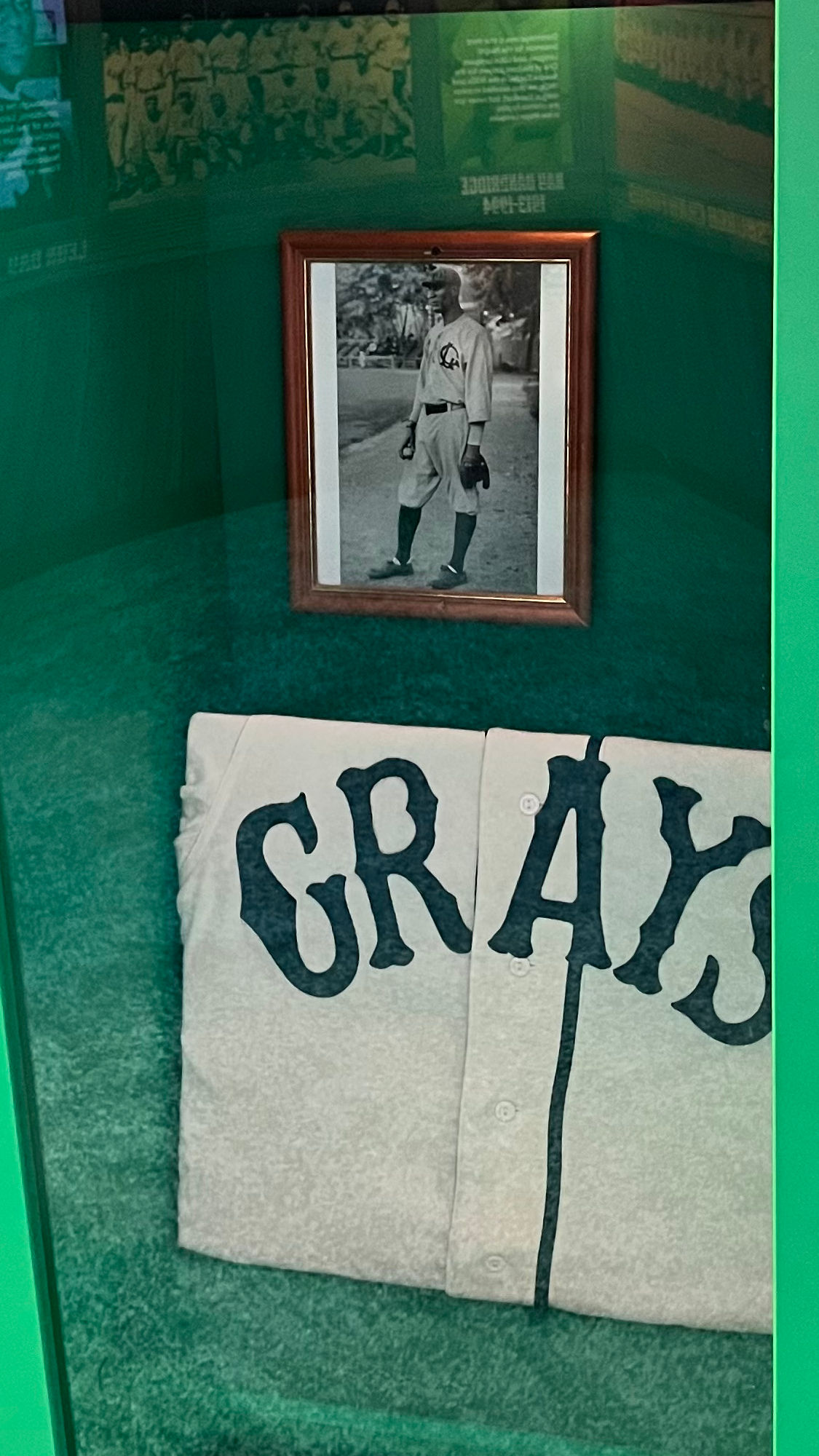
Joseph Williams
Joseph Williams was the most dominant black baseball pitcher between 1900-1930. His blazing fastball and strikeout artistry earned him the distinctive nickname "Smokey Joe". Williams toiled in the amateur leagues of San Antonio before being discovered by black professional baseball. He then embarked on a stellar career, pitching several multiple strikeout games and once compiling 40 wins in a season. Williams also won 20 Negro Leagues exhibition games which included a shutout of the world champion New York Giants in 1912.
Lincoln Giants owner Frank Leland once said of Williams: "If you have ever witnessed the speed of a pebble in a storm you have not even seen the equal of the speed possessed by this wonderful Texas Giant. He is the king of all pitching hailing from the Lone Star state, and you have but to see him once to exclaim, "That's a-plenty!"
Joseph Williams was the most dominant black baseball pitcher between 1900-1930. His blazing fastball and strikeout artistry earned him the distinctive nickname "Smokey Joe". Williams toiled in the amateur leagues of San Antonio before being discovered by black professional baseball. He then embarked on a stellar career, pitching several multiple strikeout games and once compiling 40 wins in a season. Williams also won 20 Negro Leagues exhibition games which included a shutout of the world champion New York Giants in 1912.
Lincoln Giants owner Frank Leland once said of Williams: "If you have ever witnessed the speed of a pebble in a storm you have not even seen the equal of the speed possessed by this wonderful Texas Giant. He is the king of all pitching hailing from the Lone Star state, and you have but to see him once to exclaim, "That's a-plenty!"
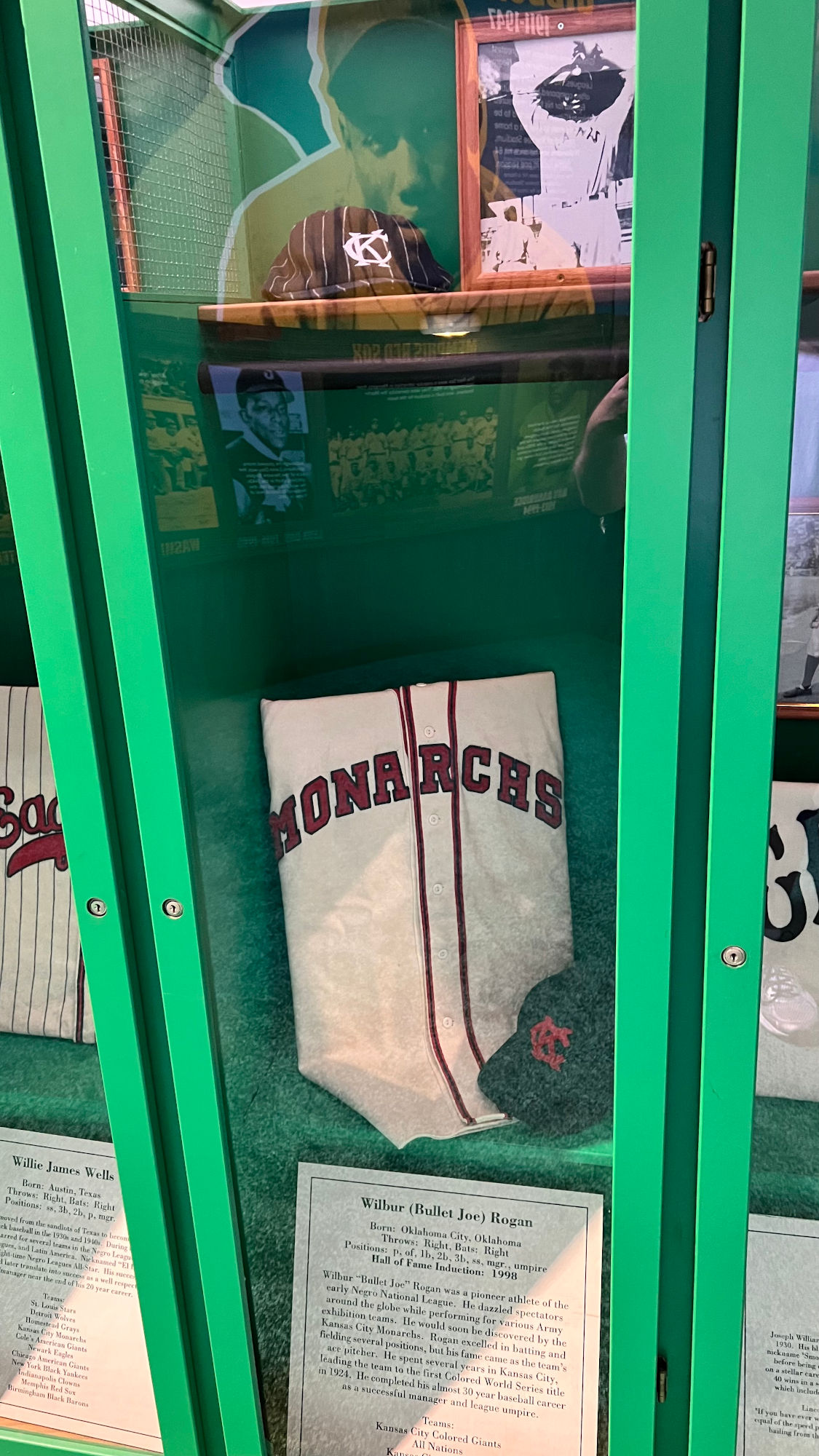
Wilbur (Bullet Joe) Rogan
Teams:
- Born: Oklahoma City, Oklahoma
- Throws: Right, Bats: Right
- Positions: P, OF, 1B, 2b, 3B, SS, MGR, UMPIRE
- Hall of Fame Induction: 1998
Teams:
- Kansas City Colored Giants
- All Nations
- Kansas City Monarchs

Wilbur (Bullet Joe) Rogan
Wilbur "Bullet Joe" Rogan was a pioneer athlete of the early Negro National League. He dazzled spectators around the globe while performing for various Army exhibition teams. He would soon be discovered by the Kansas City Monarchs. Rogan excelled in batting and fielding several positions, but his fame came as the team's ace pitcher. He spent several years in Kansas City, leading the team to the first Colored World Series title in 1924. He completed his almost 30 year baseball career as a successful manager and league umpire.
Wilbur "Bullet Joe" Rogan was a pioneer athlete of the early Negro National League. He dazzled spectators around the globe while performing for various Army exhibition teams. He would soon be discovered by the Kansas City Monarchs. Rogan excelled in batting and fielding several positions, but his fame came as the team's ace pitcher. He spent several years in Kansas City, leading the team to the first Colored World Series title in 1924. He completed his almost 30 year baseball career as a successful manager and league umpire.
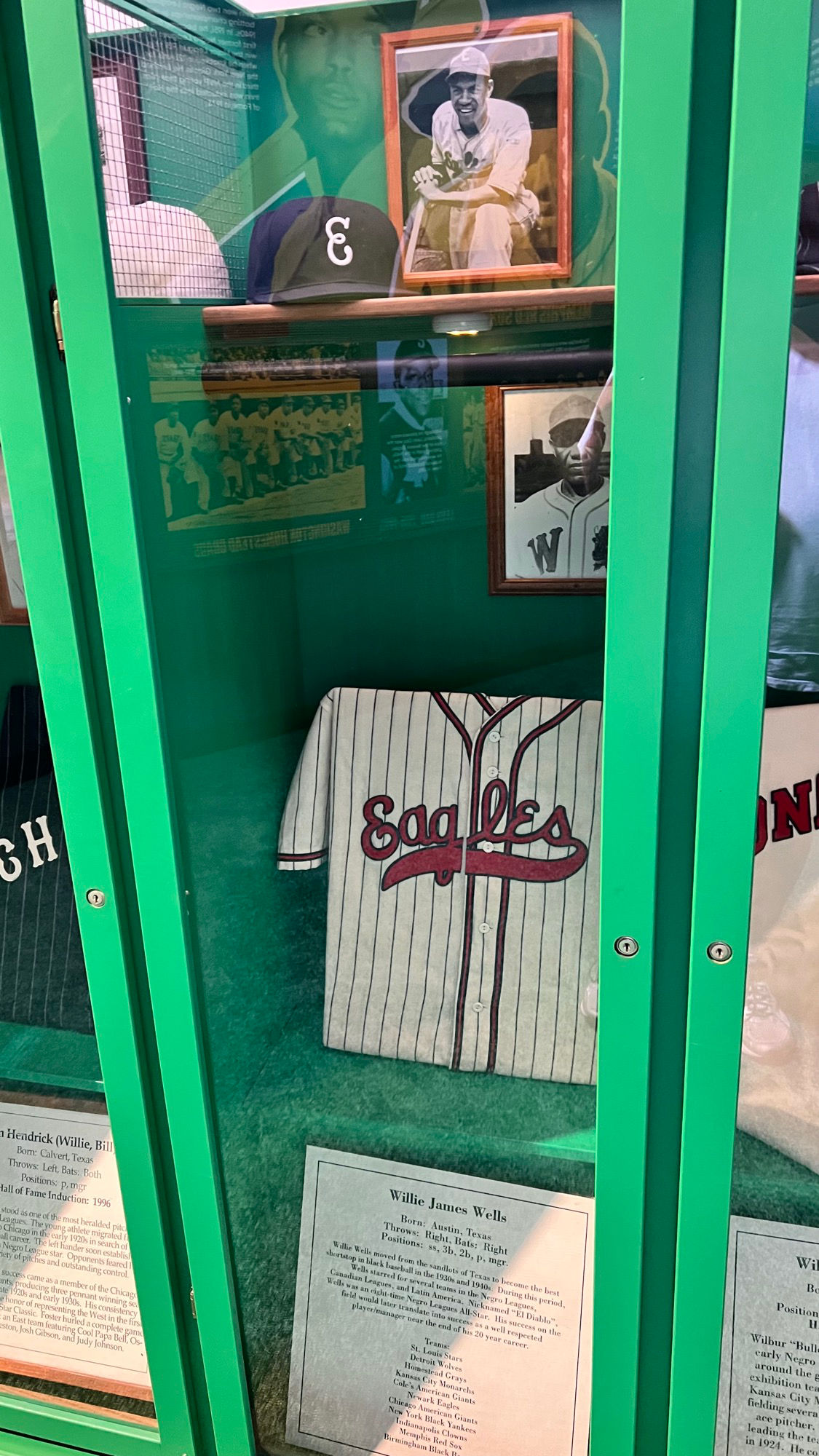
Willie James Wells
Teams:
- Born: Austin, Texas
- Throws: Right, Bats: Right
- Positions: SS, 3B, 2B, P, MGR
Teams:
- St. Louis Stars
- Detroit Wolves
- Homestead Grays
- Kansas Cily Monarchs
- Cold's American Giants
- Newark Eagles
- Chicago American Giants
- New York Black Yankees
- Indianapolis Clowns
- Memphis Red Sox
- Birmingham Black Barons
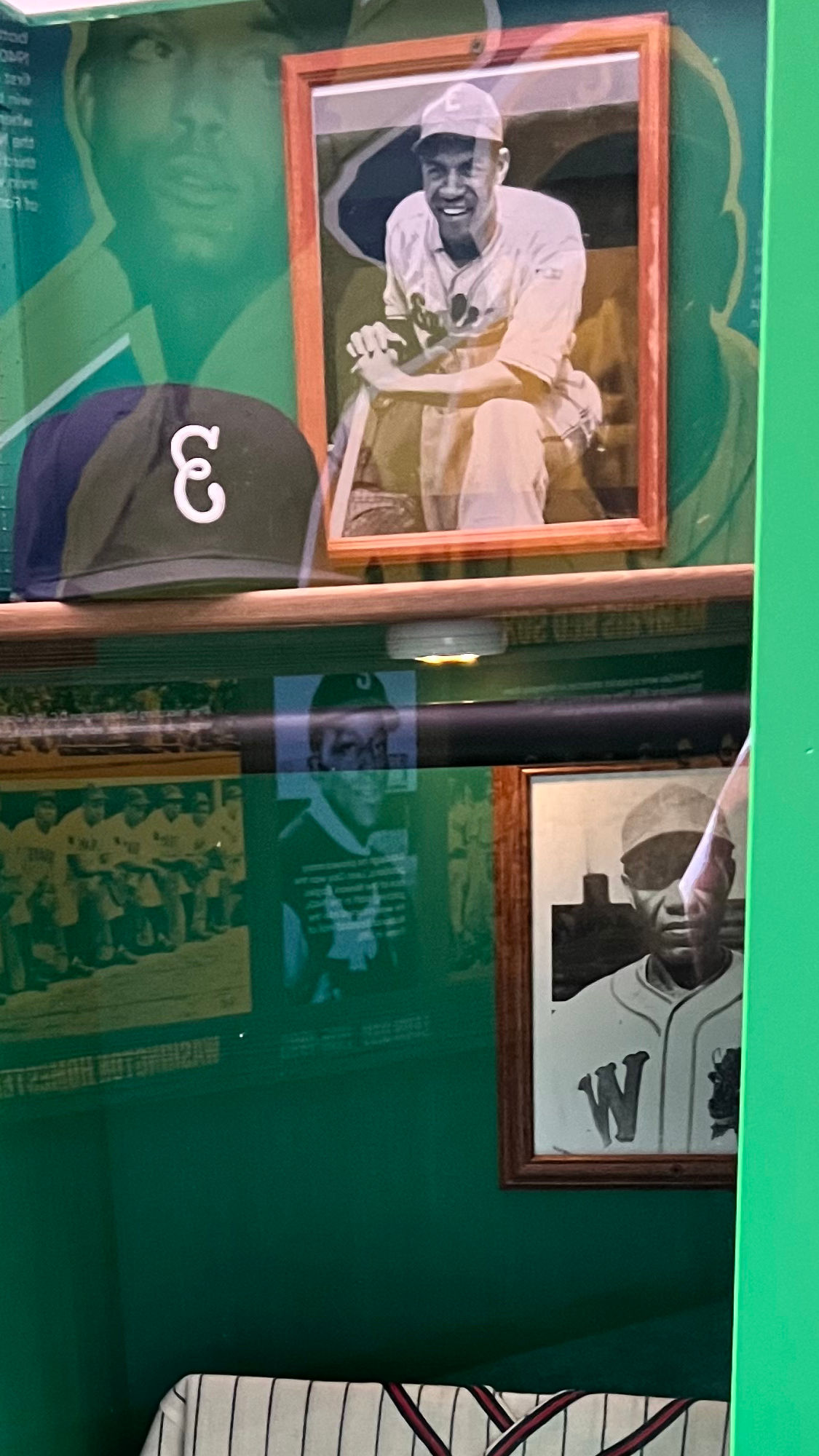
Willie James Wells
Willie Wells moved from the sandlots of Texas to become the best shortstop in black baseball in the 1930s and 1940s. During this period, Wells starred for several teams in the Negro Leagues, Canadian Leagues, and Latin America. Nicknamed "El Diablo", Wells was an eight-time Negro Leagues All-Star. His success on the field would later translate into success as a well respected player/manager near the end of his 20 year career.
Willie Wells moved from the sandlots of Texas to become the best shortstop in black baseball in the 1930s and 1940s. During this period, Wells starred for several teams in the Negro Leagues, Canadian Leagues, and Latin America. Nicknamed "El Diablo", Wells was an eight-time Negro Leagues All-Star. His success on the field would later translate into success as a well respected player/manager near the end of his 20 year career.
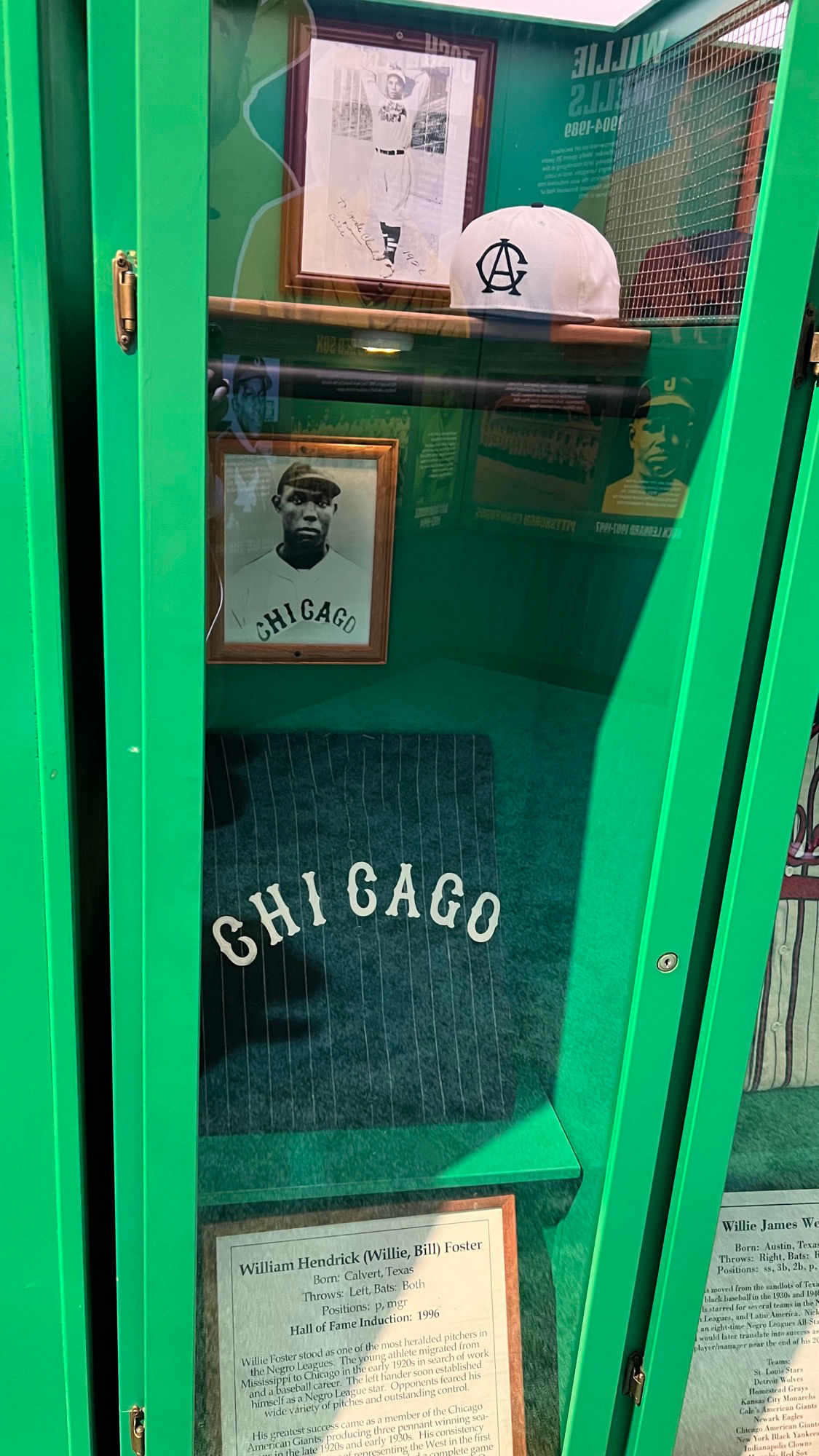
William Hendrick (Willie, Bill) Foster
- Born: Calvert, Texas
- Throws: Left, Bats: Both
- Positions: P, MGR
- Hall of Fame Induction: 1996
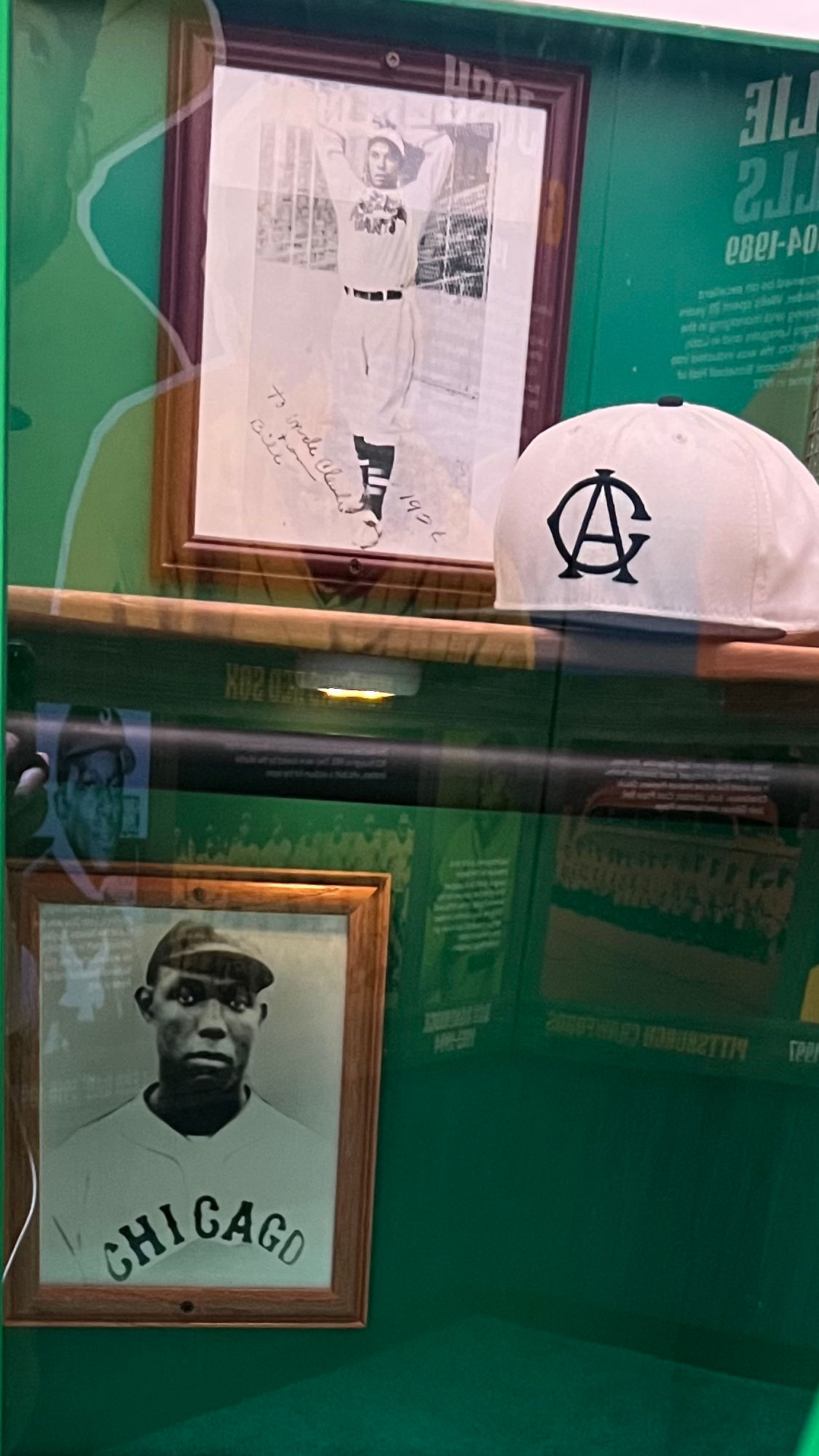
William Hendrick (Willie, Bill) Foster
Willie Foster stood as one of the most heralded pitchers in the Negro Leagues. The young athlete migrated from Mississippi to Chicago in the early 1920s in search of work and a baseball career. The left hander soon established himself as a Negro League star. Opponents feared his wide variety of pitches and outstanding control.
His greatest success came as a member of the Chicago American Giants, producing three pennant winning seasons in the late 1920s and early 1930s.
Willie Foster stood as one of the most heralded pitchers in the Negro Leagues. The young athlete migrated from Mississippi to Chicago in the early 1920s in search of work and a baseball career. The left hander soon established himself as a Negro League star. Opponents feared his wide variety of pitches and outstanding control.
His greatest success came as a member of the Chicago American Giants, producing three pennant winning seasons in the late 1920s and early 1930s.
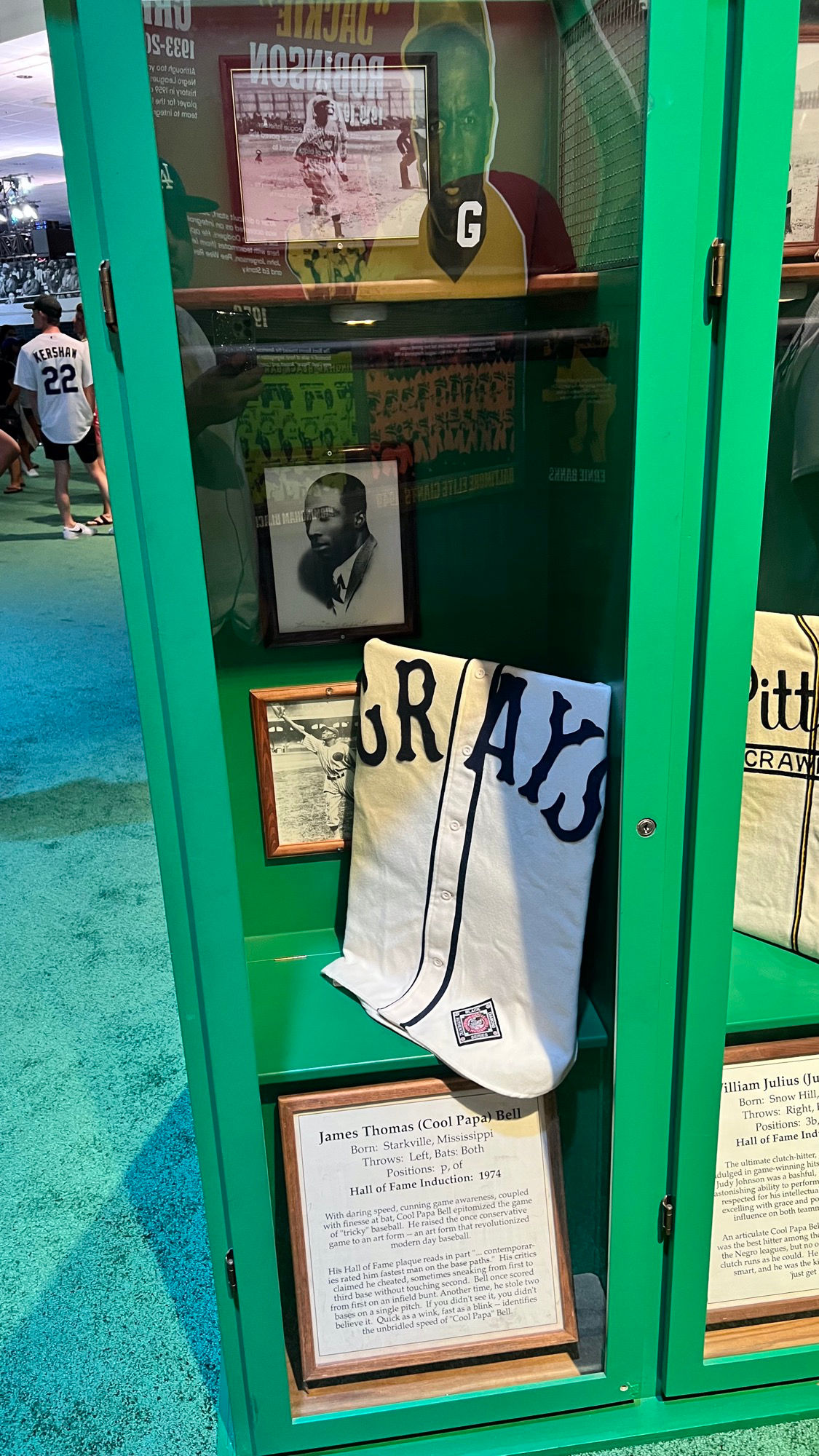
James Thomas (Cool Papa) Bell
- Born: Starkville, Mississippi
- Throws: Left, Bats: Both
- Positions: P, OF
- Hall of Fame Induction: 1974
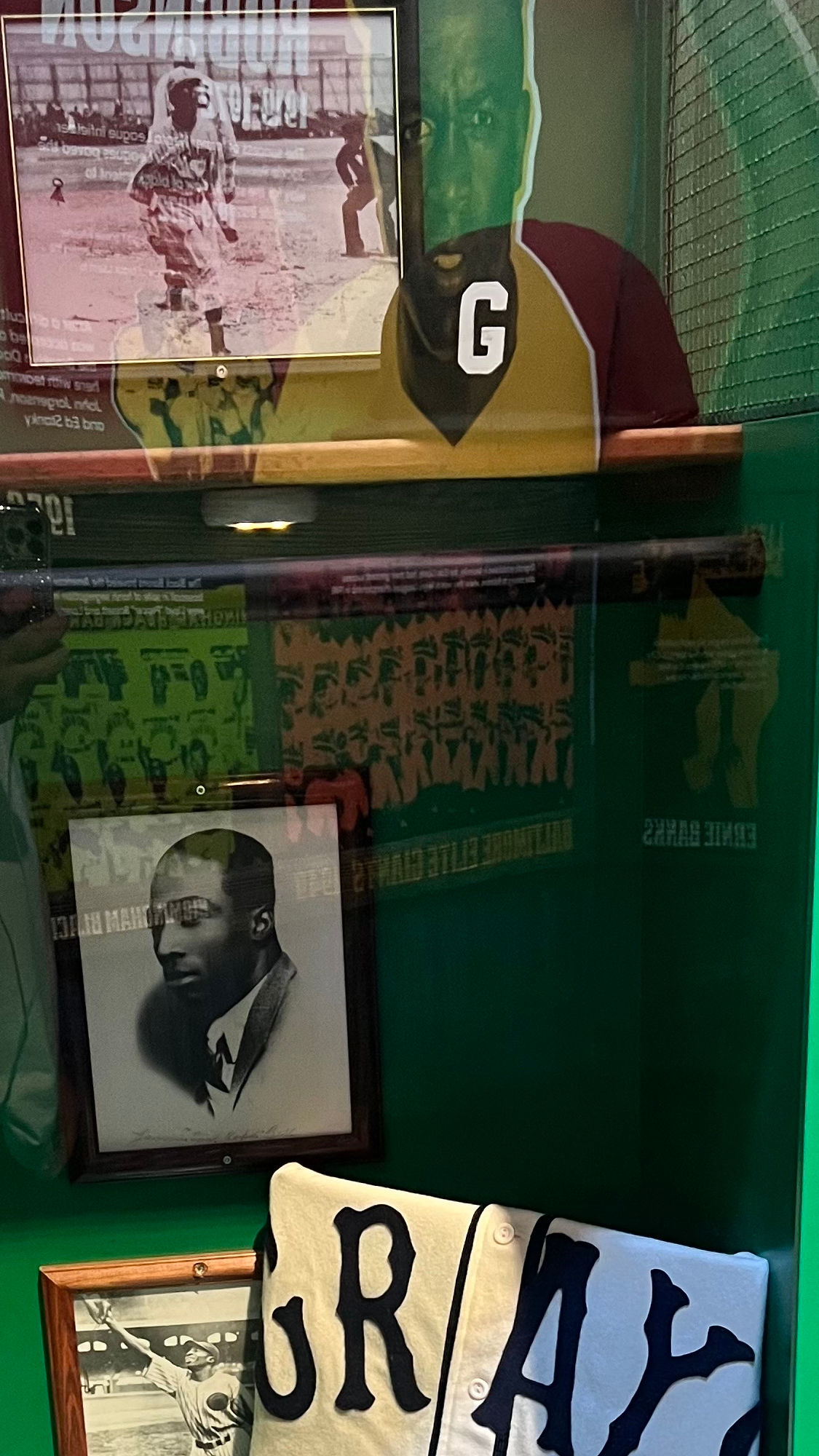
James Thomas (Cool Papa) Bell
With daring speed, cunning game awareness, coupled with finesse at bat, Cool Papa Bell epitomized the game of "tricky" baseball. He raised the once conservative game to an art form - an art form that revolutionized modern day baseball.
His Hall of Fame plaque reads in part "... contemporaries rated him fastest man on the base paths." His critics claimed he cheated, sometimes sneaking from first to third base without touching second. Bell once scored from first on an infield bunt. Another time, he stole two bases on a single pitch. If you didn't see it, you didn't believe it. Quick as a wink, fast as a blink - identifies the unbridled speed of "Cool Papa" Bell.
With daring speed, cunning game awareness, coupled with finesse at bat, Cool Papa Bell epitomized the game of "tricky" baseball. He raised the once conservative game to an art form - an art form that revolutionized modern day baseball.
His Hall of Fame plaque reads in part "... contemporaries rated him fastest man on the base paths." His critics claimed he cheated, sometimes sneaking from first to third base without touching second. Bell once scored from first on an infield bunt. Another time, he stole two bases on a single pitch. If you didn't see it, you didn't believe it. Quick as a wink, fast as a blink - identifies the unbridled speed of "Cool Papa" Bell.
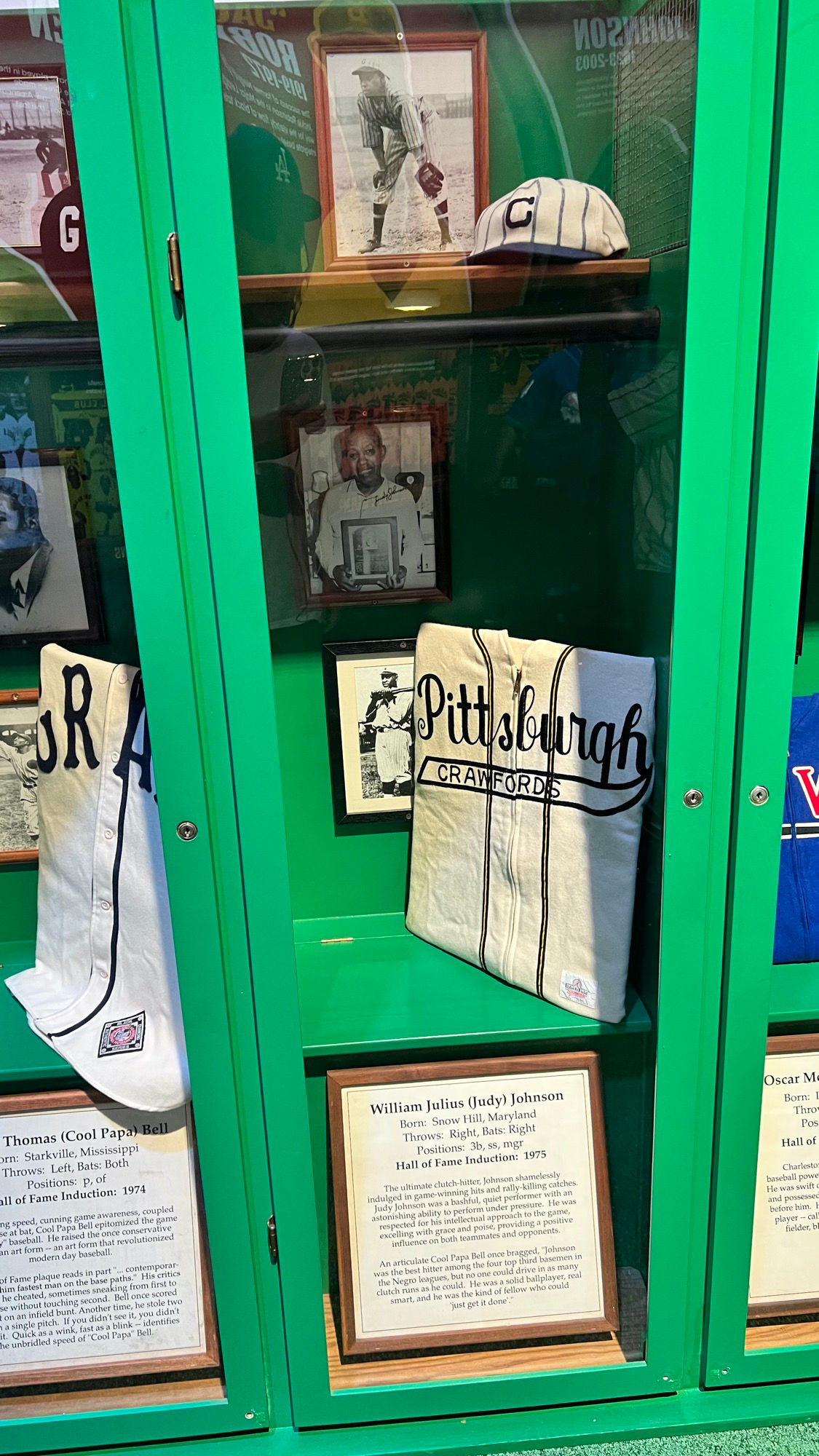
William Julius (Judy) Johnson
- Born: Snow Hill, Maryland
- Throws: Right, Bats: Right
- Positions: 3B, SS, MGR
- Hall of Fame Induction: 1975
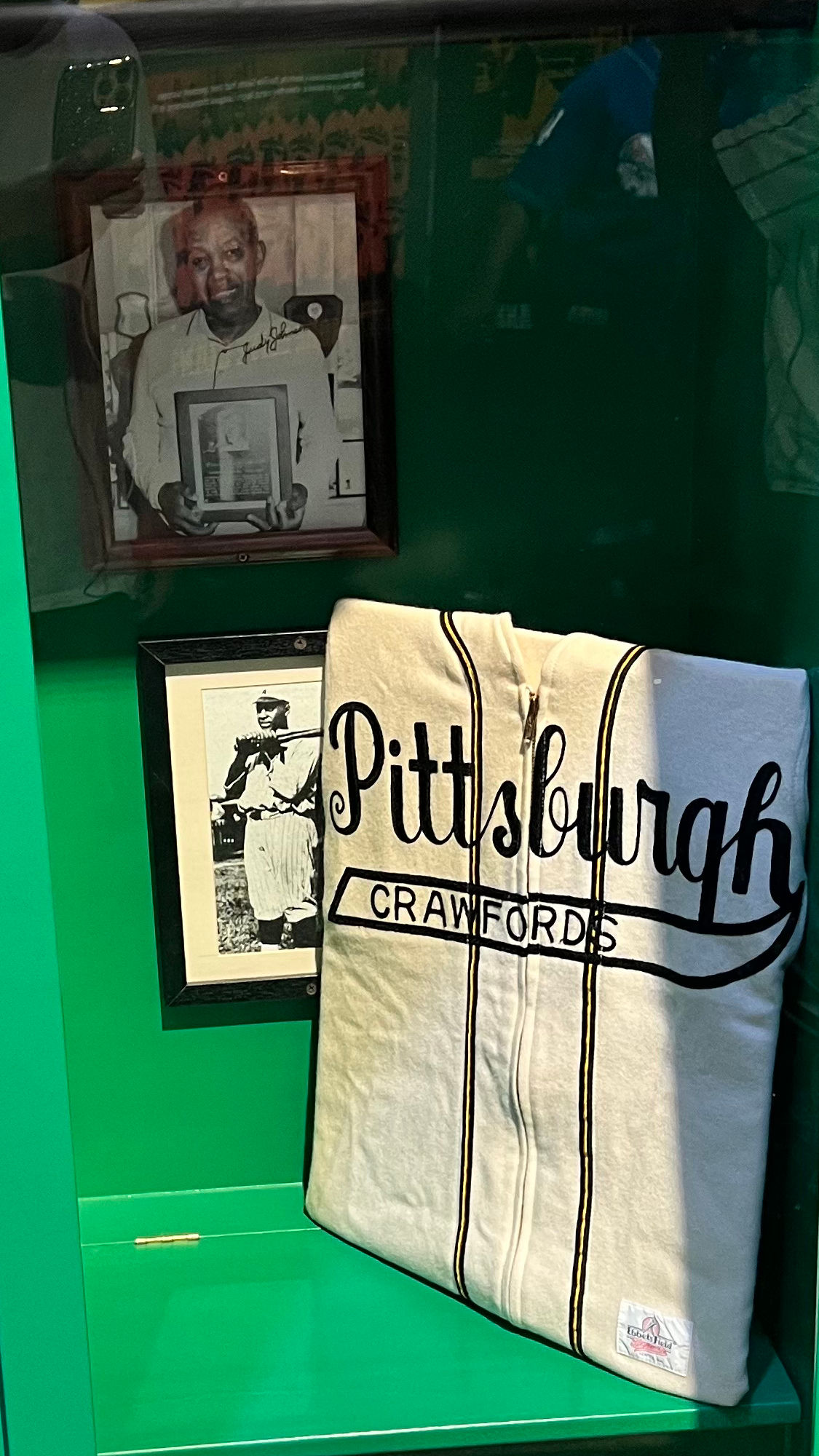
William Julius (Judy) Johnson
The ultimate clutch-hitter, Johnson shamelessly indulged in game-winning hits and rally-killing catches. Judy Johnson was a bashful, quiet performer with an astonishing ability to perform under pressure. He was respected for his intellectual approach to the game, excelling with grace and poise, providing a positive influence on both teammates and opponents.
An articulate Cool Papa Bell once bragged, "Johnson was the best hitter among the four top third basemen in the Negro leagues, but no one could drive in as many clutch runs as he could. He was a solid ballplayer, real smart, and he was the kind of fellow who could 'just get it done'."
The ultimate clutch-hitter, Johnson shamelessly indulged in game-winning hits and rally-killing catches. Judy Johnson was a bashful, quiet performer with an astonishing ability to perform under pressure. He was respected for his intellectual approach to the game, excelling with grace and poise, providing a positive influence on both teammates and opponents.
An articulate Cool Papa Bell once bragged, "Johnson was the best hitter among the four top third basemen in the Negro leagues, but no one could drive in as many clutch runs as he could. He was a solid ballplayer, real smart, and he was the kind of fellow who could 'just get it done'."
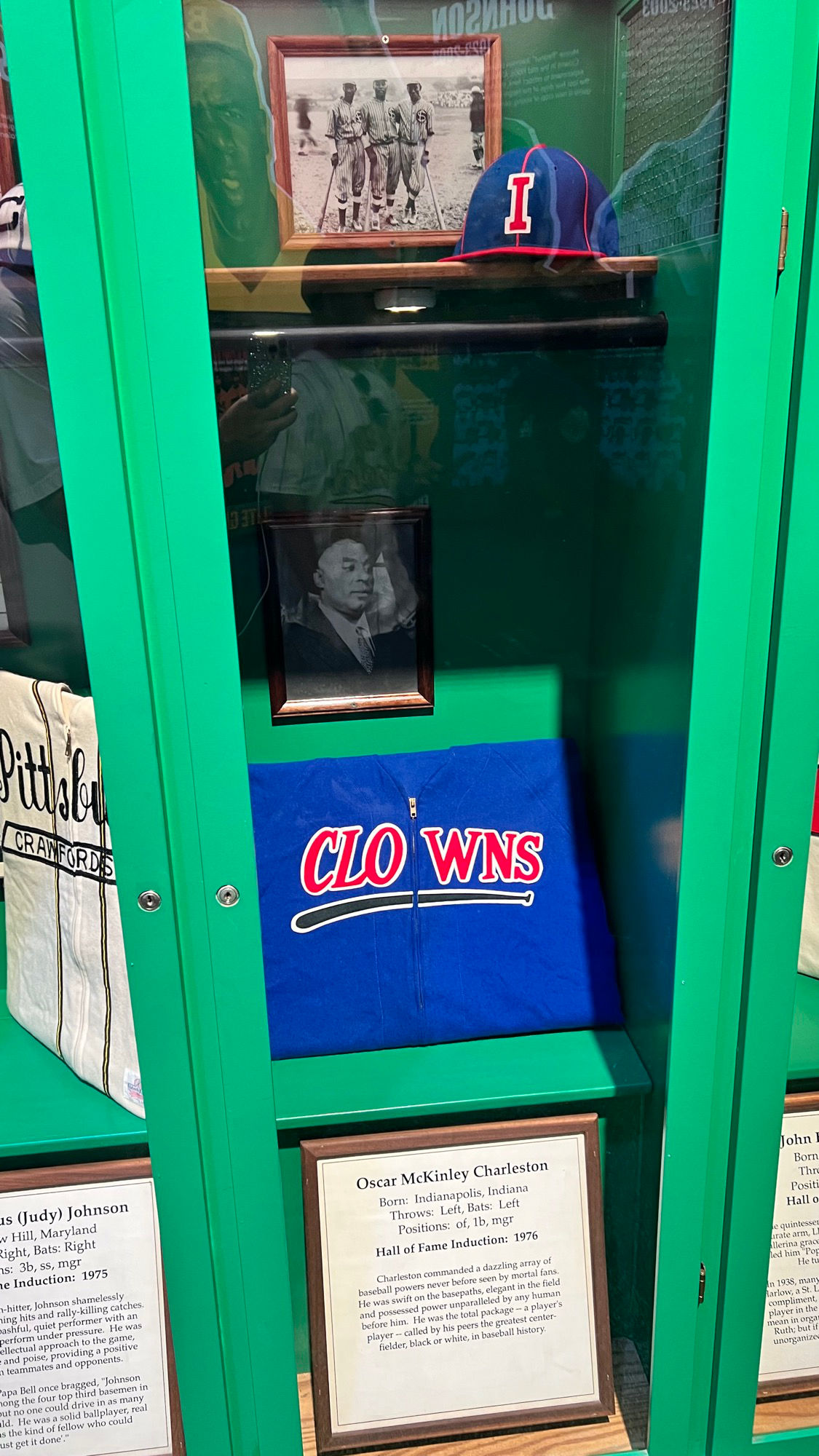
Oscar McKinley Charleston
- Born: Indianapolis, Indiana
- Throws: Left, Bats: Left
- Positions: OF, 1B, MGR
- Hall of Fame Induction:
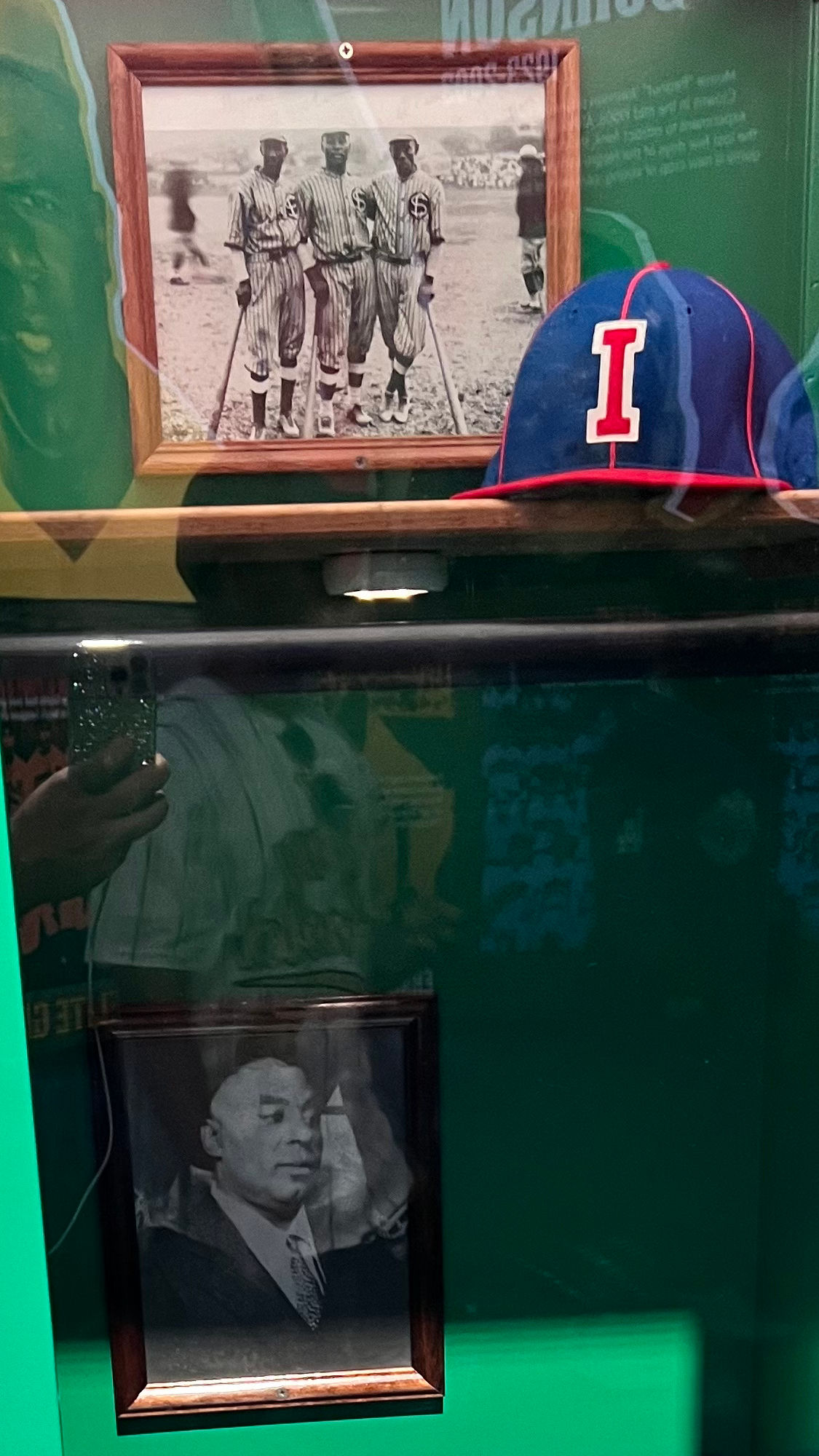
Oscar McKinley Charleston
Charleston commanded a dazzling array of baseball powers never before seen by mortal fans. He was swift on the basepaths, elegant in the field and possessed power unparalleled by any human before him. He was the total package - a player's player - called by his peers the greatest center fielder, black or white, in baseball history.
Charleston commanded a dazzling array of baseball powers never before seen by mortal fans. He was swift on the basepaths, elegant in the field and possessed power unparalleled by any human before him. He was the total package - a player's player - called by his peers the greatest center fielder, black or white, in baseball history.

John Henry (Pop) Lloyd
- Born: Gainesville, Florida
- Throws: Right, Bats: Left
- Positions: 1B, 2B, SS, OF, MGR
- Hall of Fame Induction: 1977

John Henry (Pop) Lloyd
The quintessential shortstop with great hands and an accurate arm, Lloyd could perform the double play with ballerina grace and slug for average and power. They called him "Pop" for he was the granddaddy of them all. He tutored the best and beat the rest.
In 1938, many years after Lloyd's career was over, Ted Harlow, a St. Louis sportswriter, paid Lloyd the ultimate compliment, when asked, "Who was the best baseball player in the history of the sport?" He replied, "If you mean in organized baseball, my answer would be Babe Ruth; but if you mean in all baseball ...
The quintessential shortstop with great hands and an accurate arm, Lloyd could perform the double play with ballerina grace and slug for average and power. They called him "Pop" for he was the granddaddy of them all. He tutored the best and beat the rest.
In 1938, many years after Lloyd's career was over, Ted Harlow, a St. Louis sportswriter, paid Lloyd the ultimate compliment, when asked, "Who was the best baseball player in the history of the sport?" He replied, "If you mean in organized baseball, my answer would be Babe Ruth; but if you mean in all baseball ...
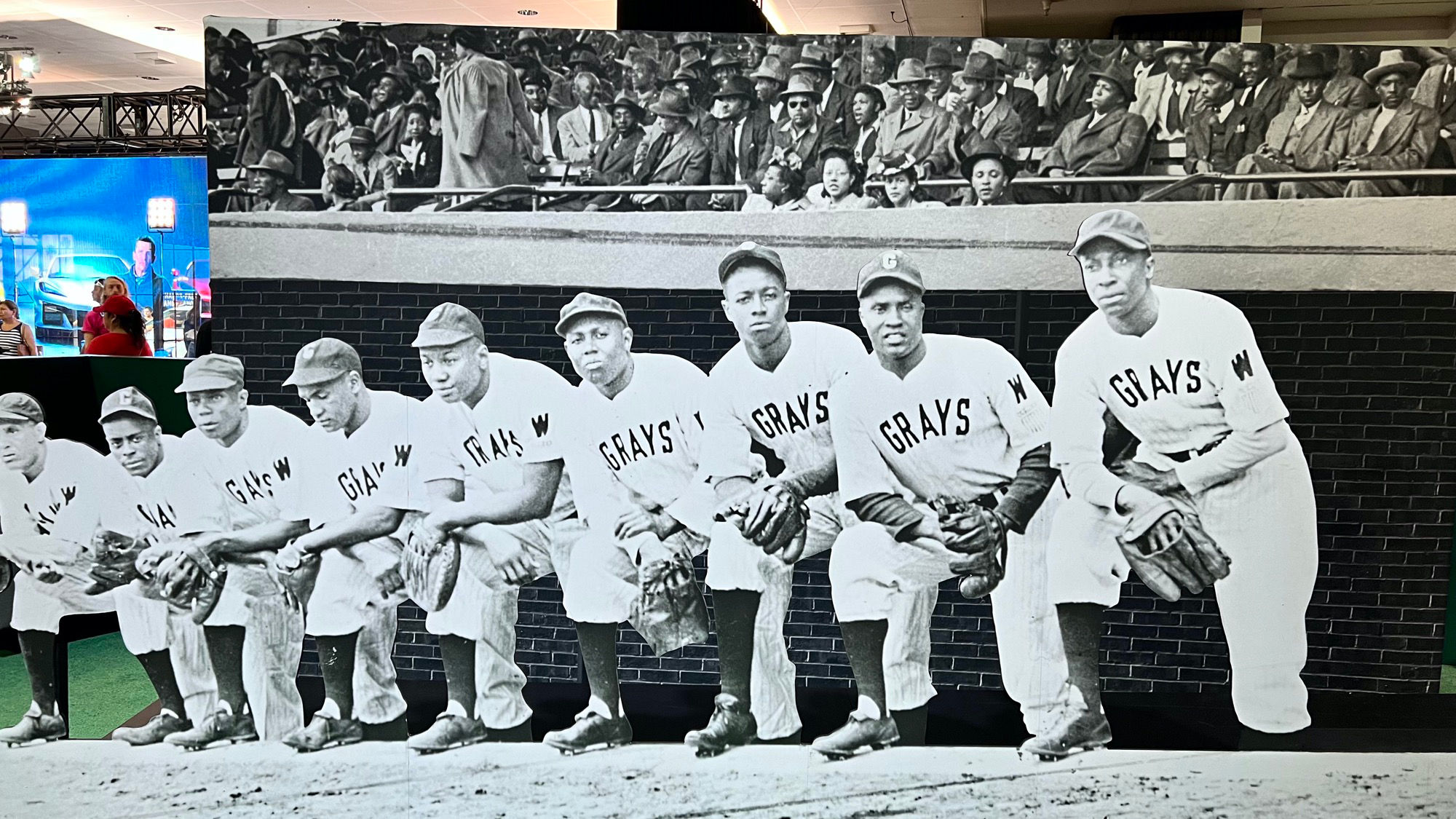
The Grays
Cardboard Cutout
Cardboard Cutout
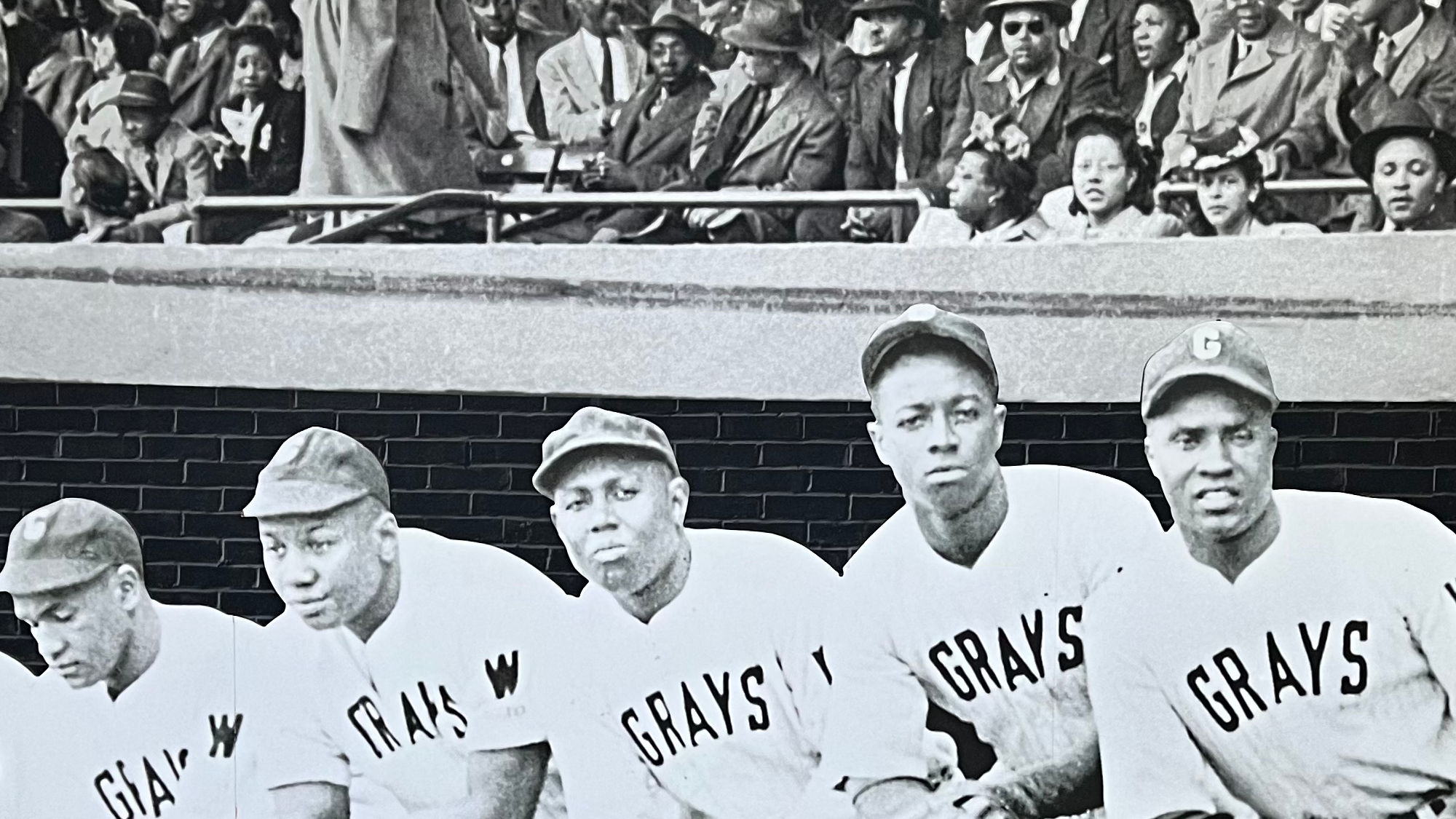
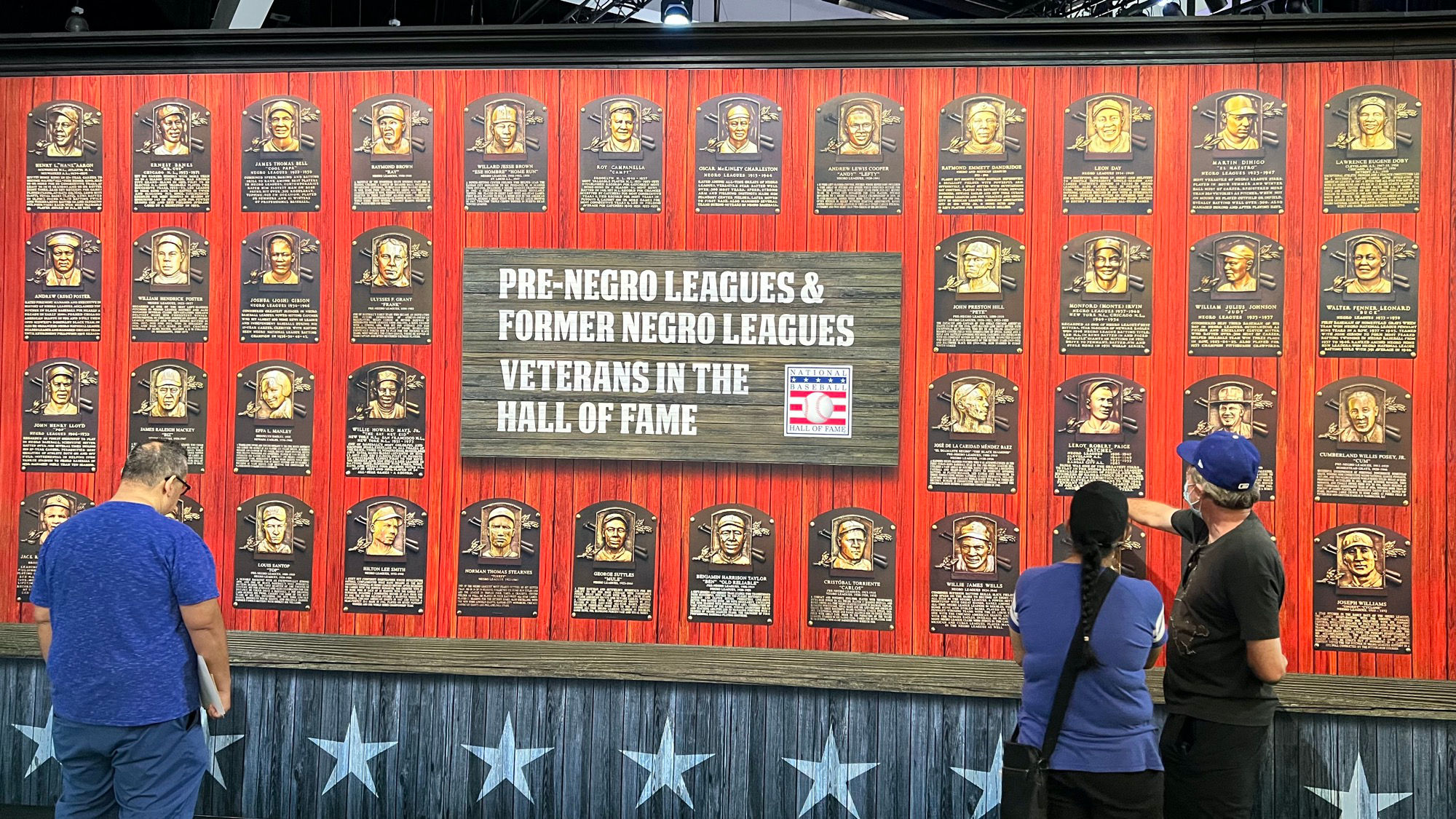
- Pre Negro Leagues & Former Negro Leagues
Veterans in the Hall of Fame
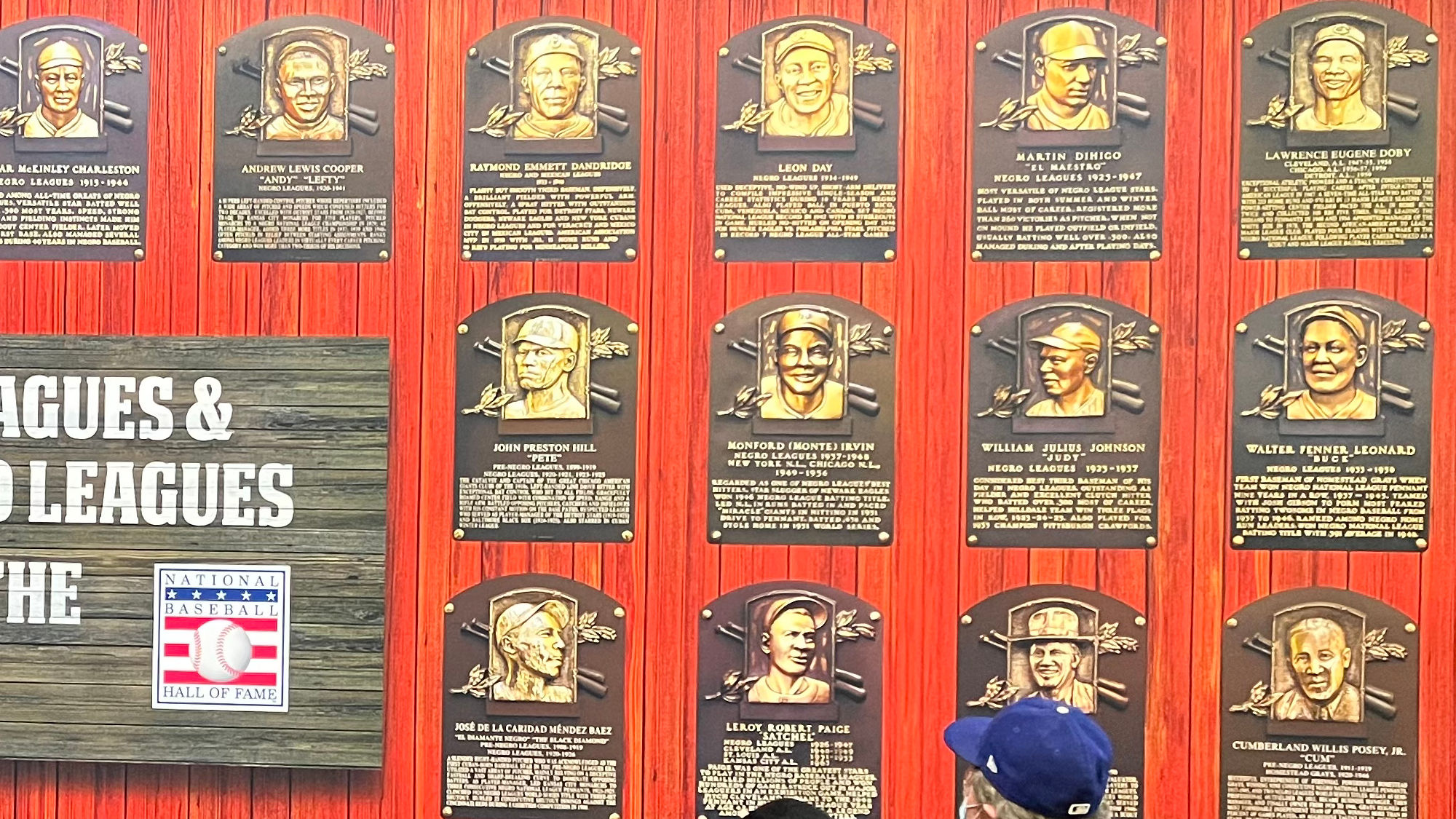

The Negro Leagues Professional Baseball
